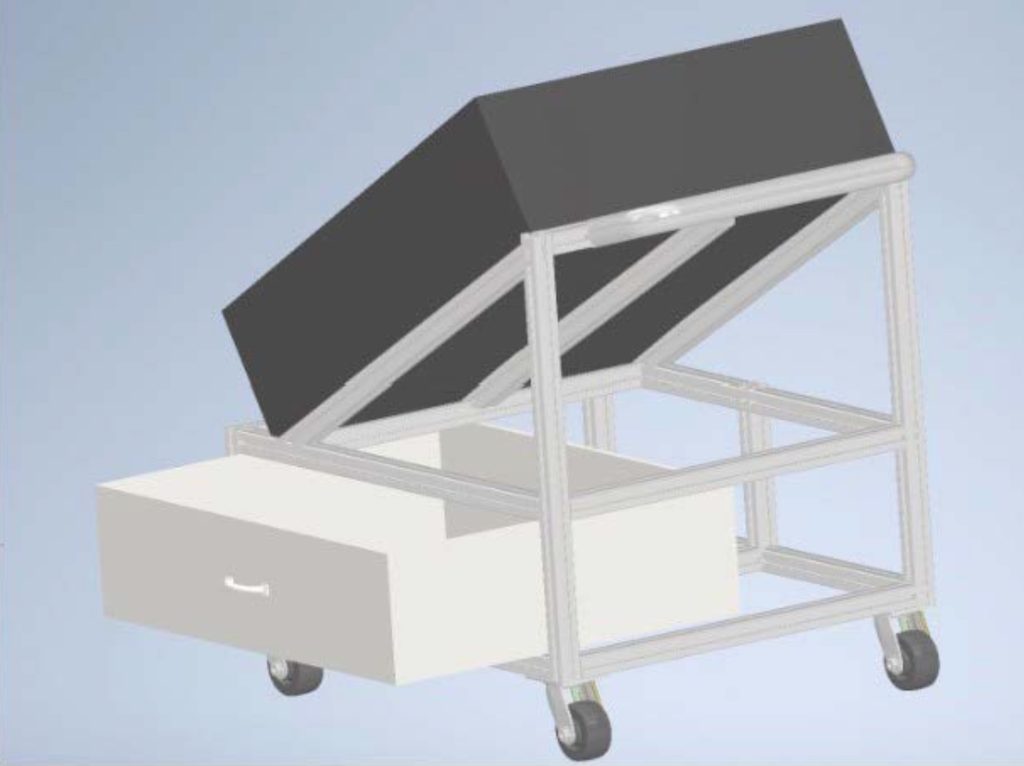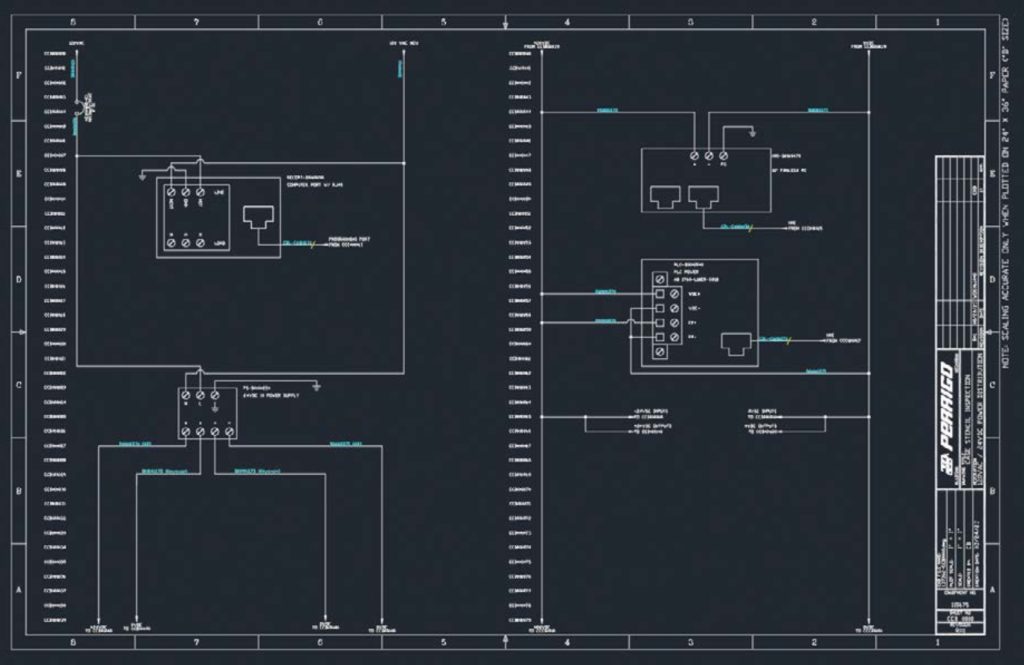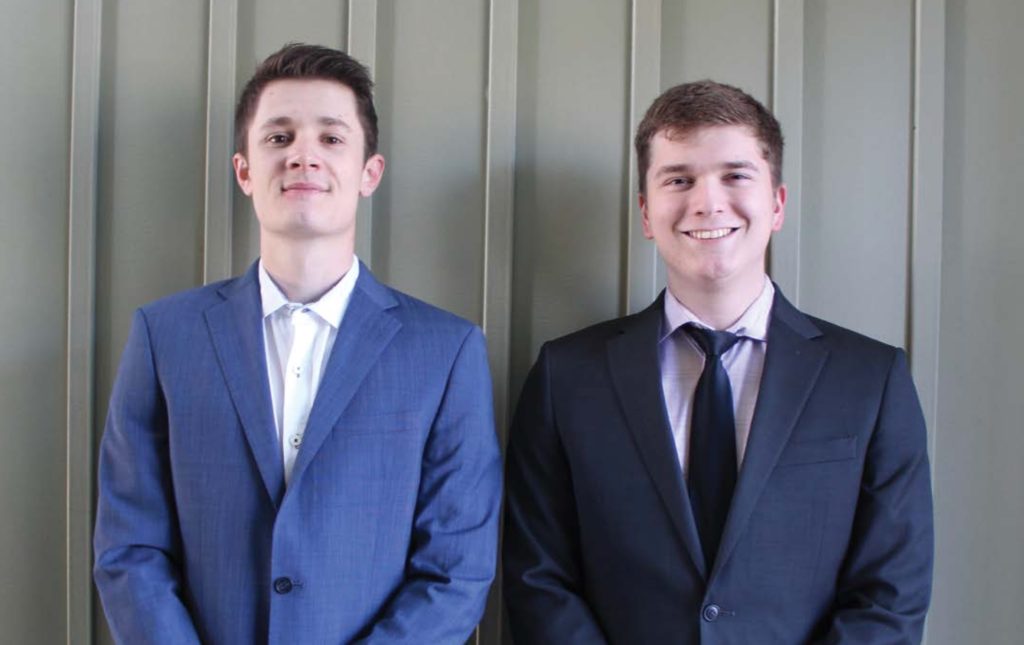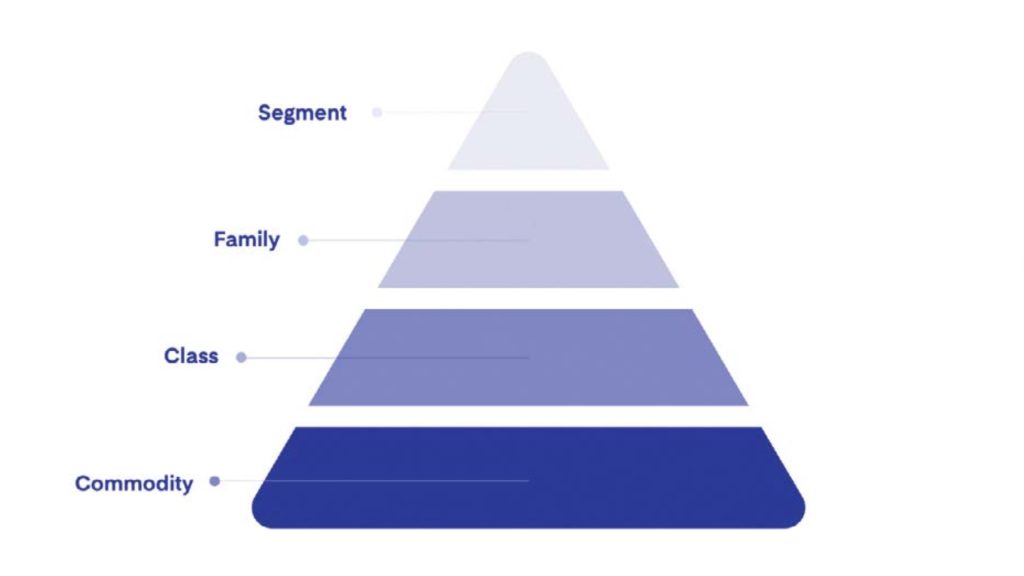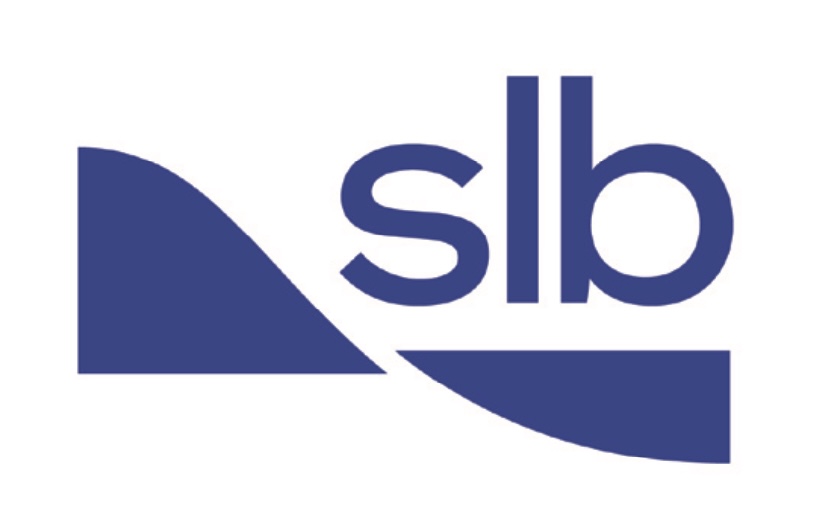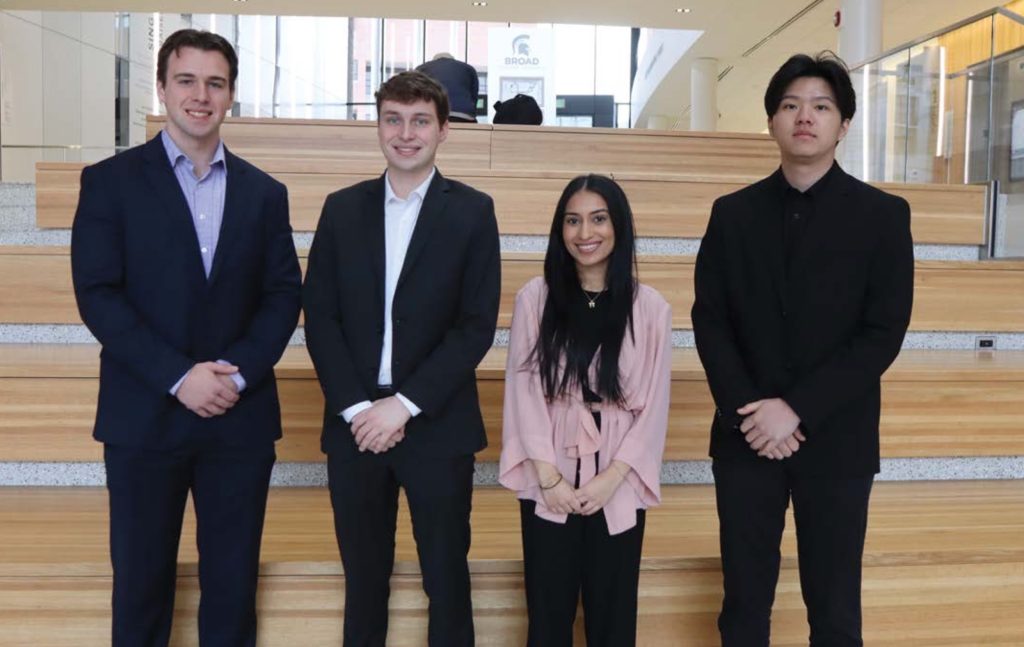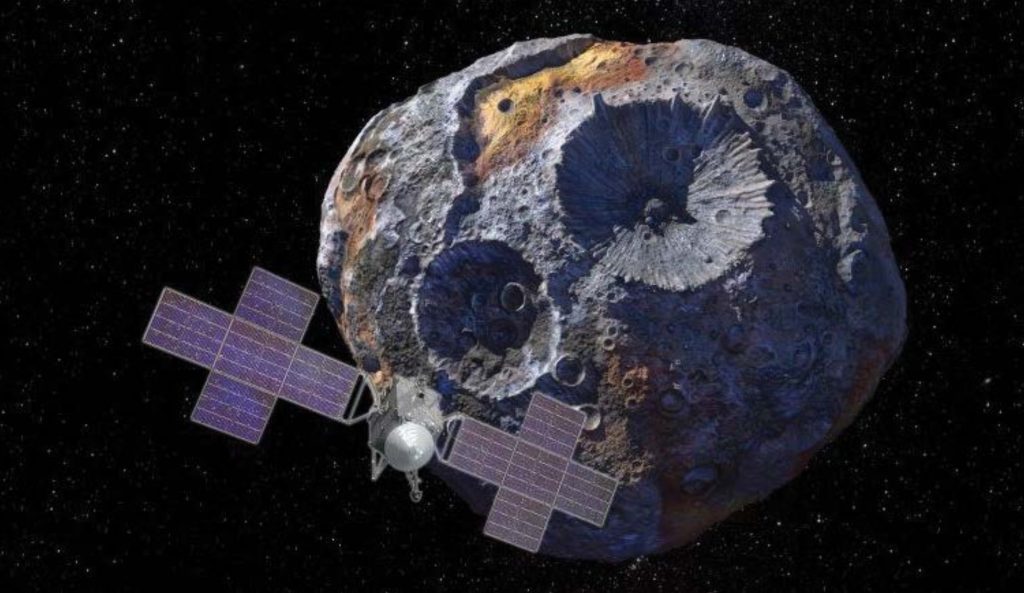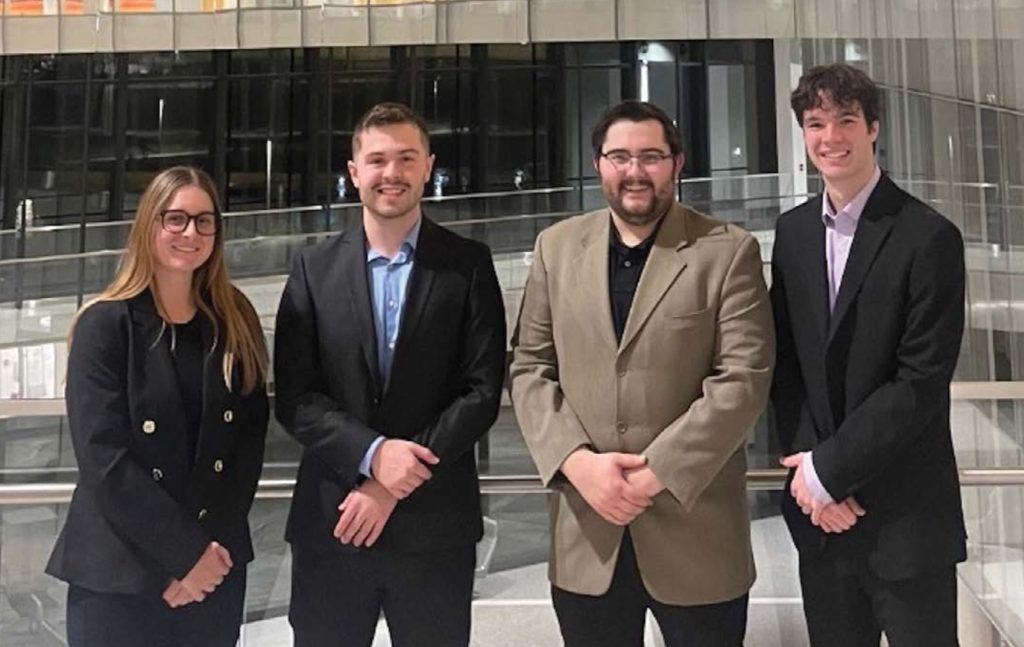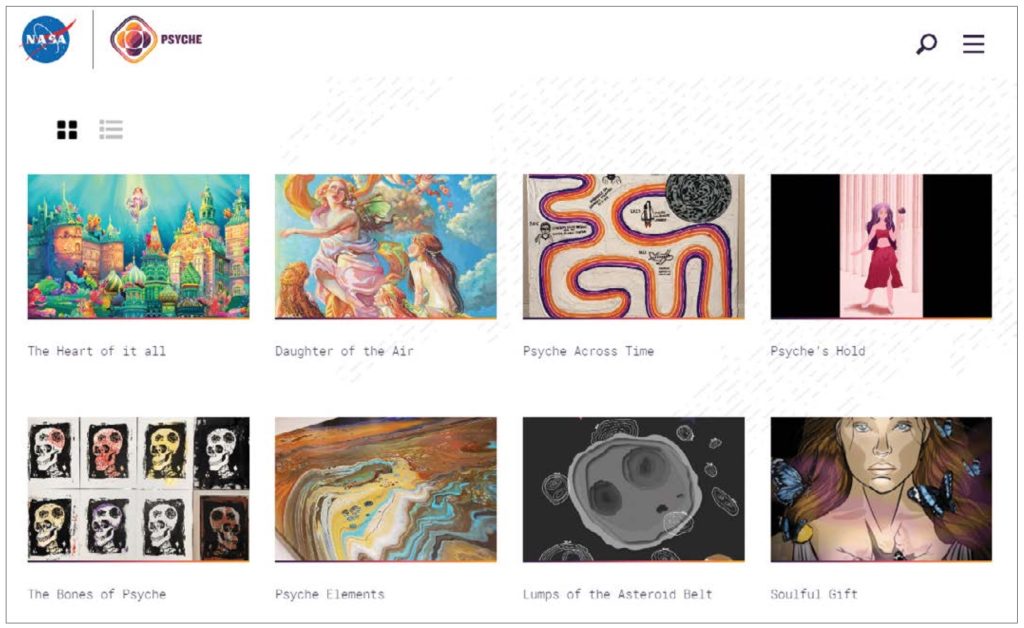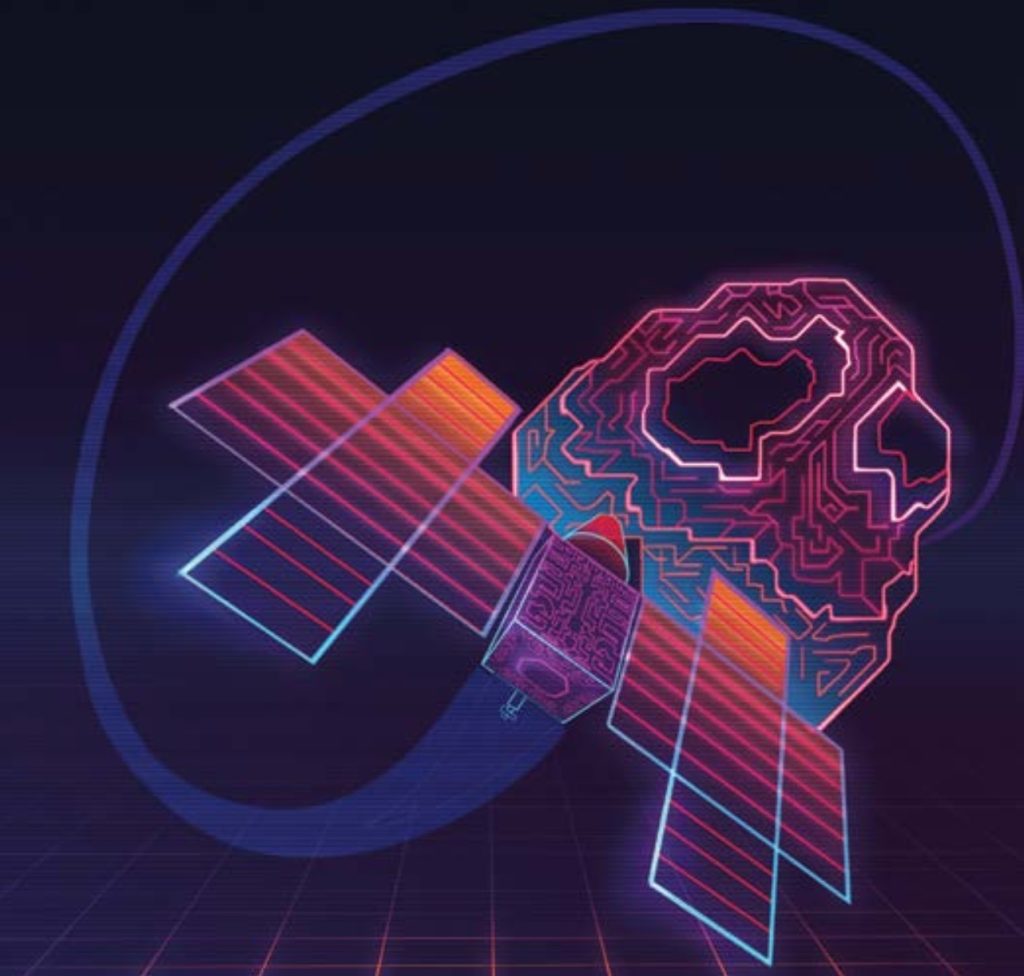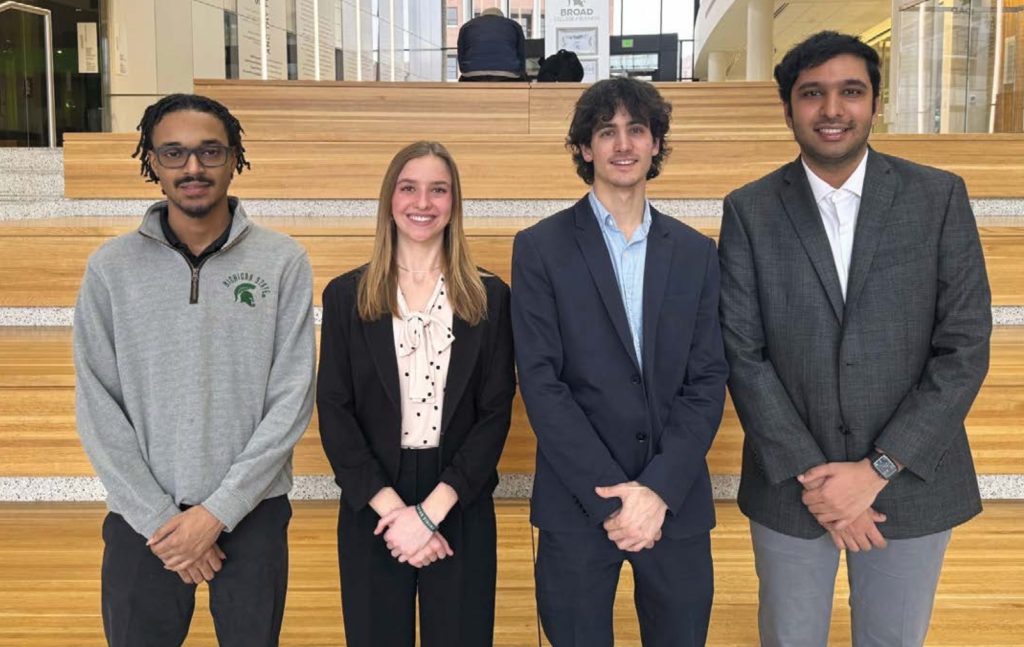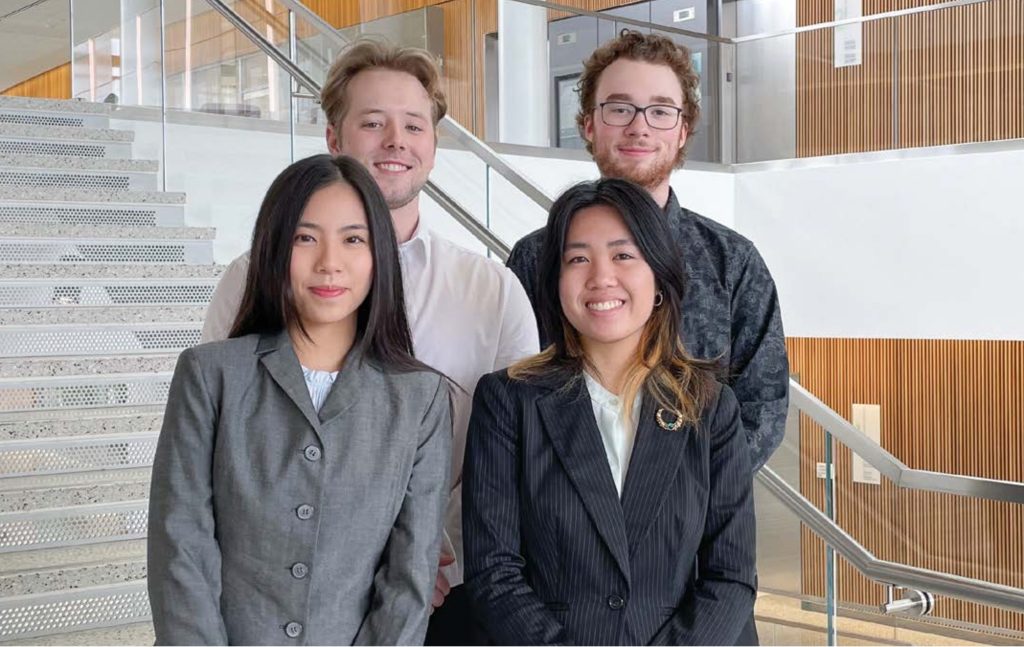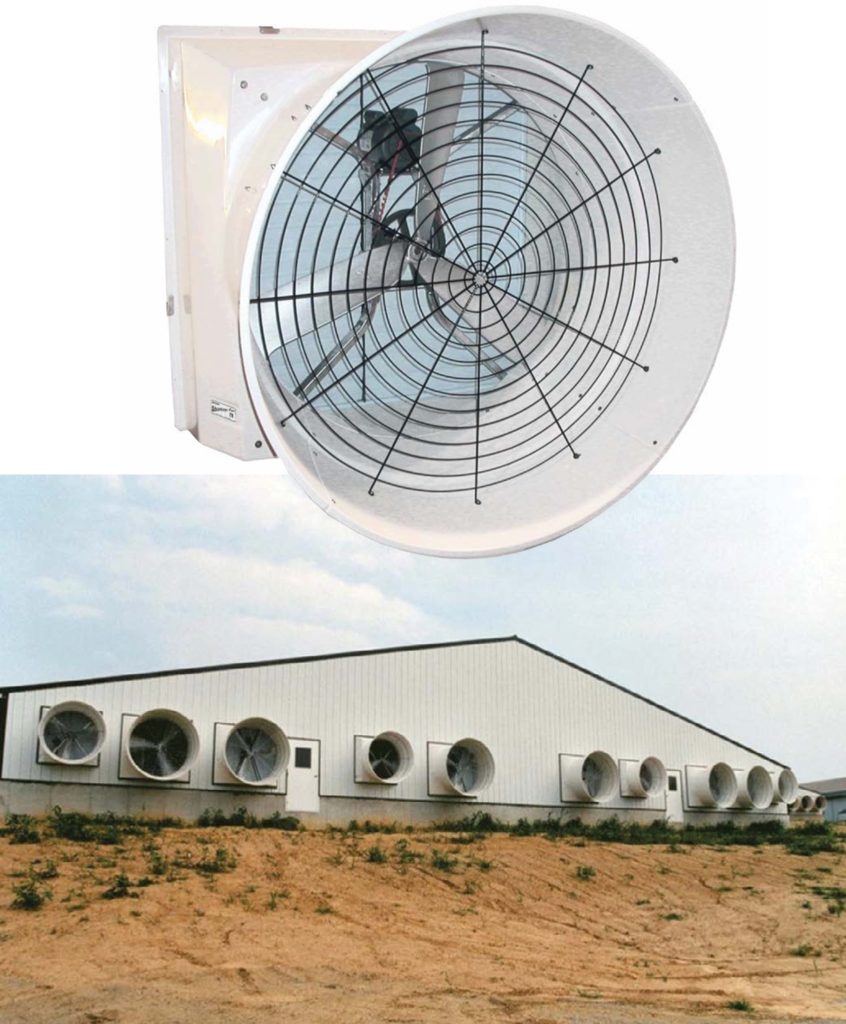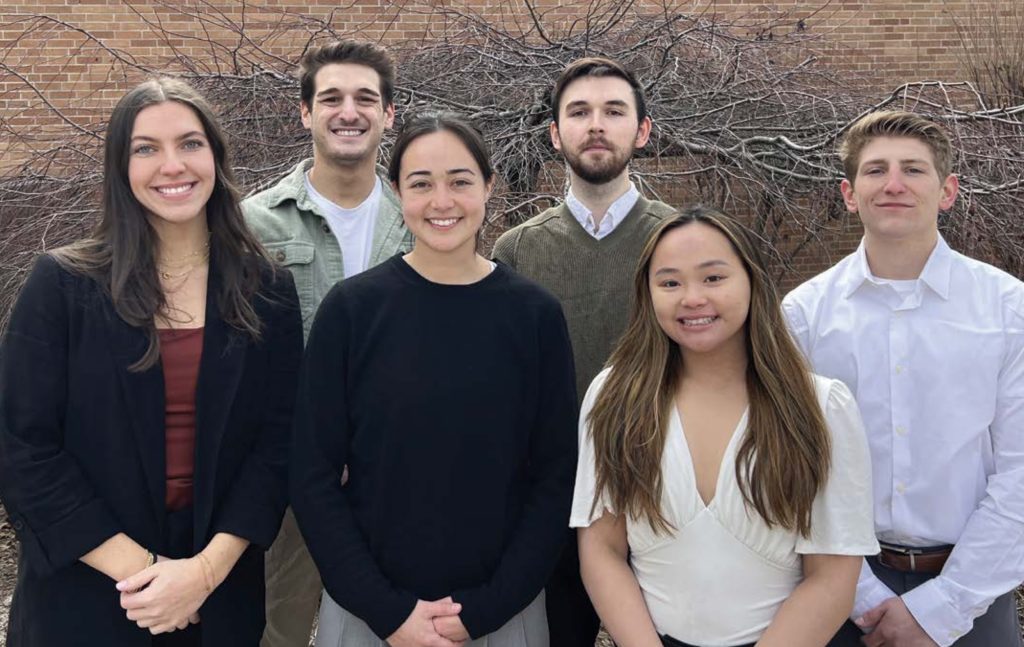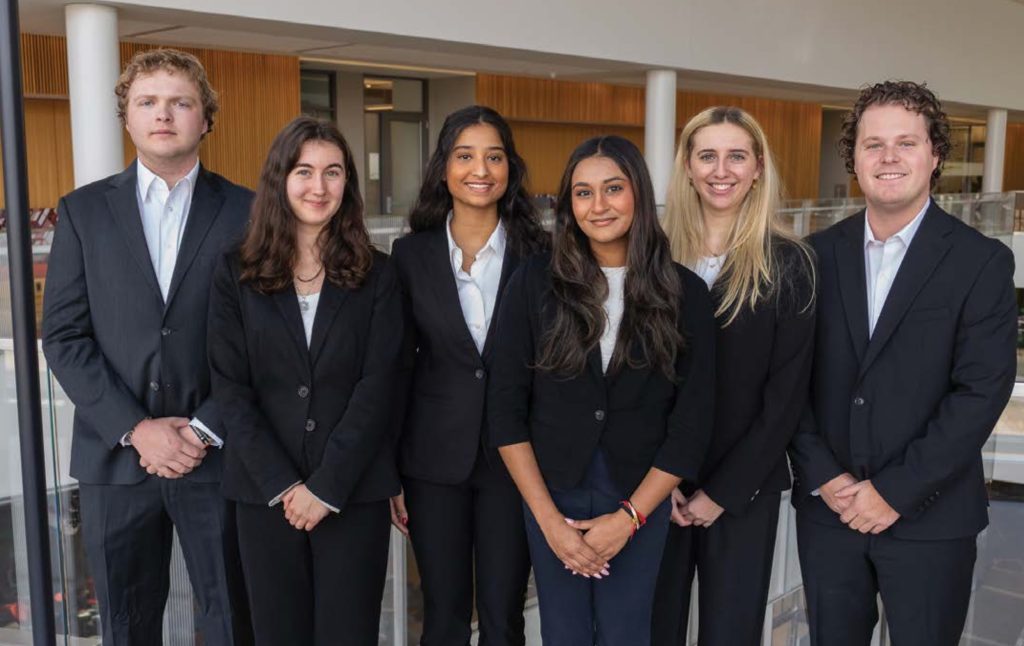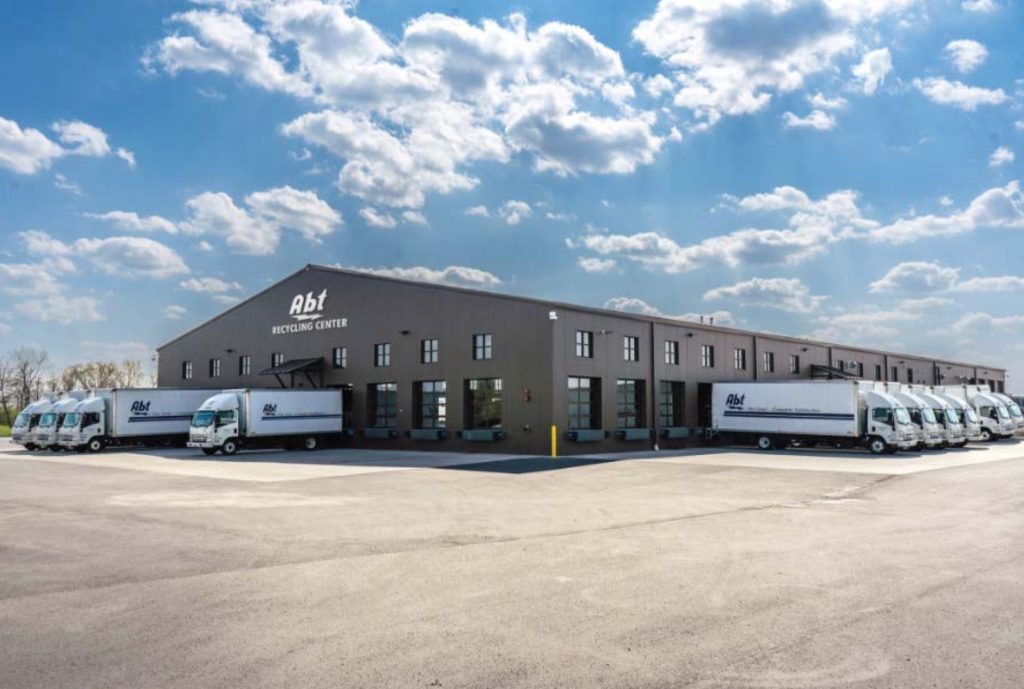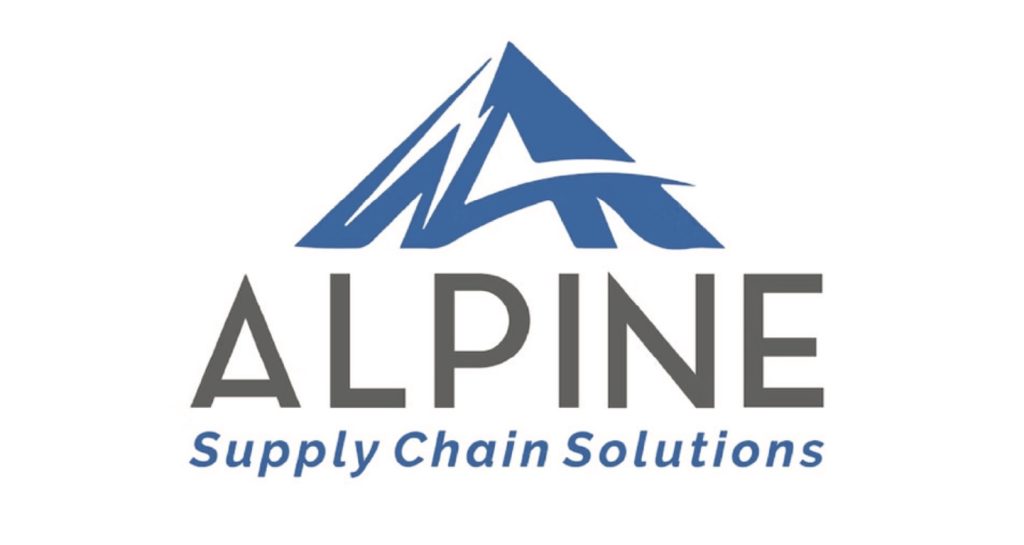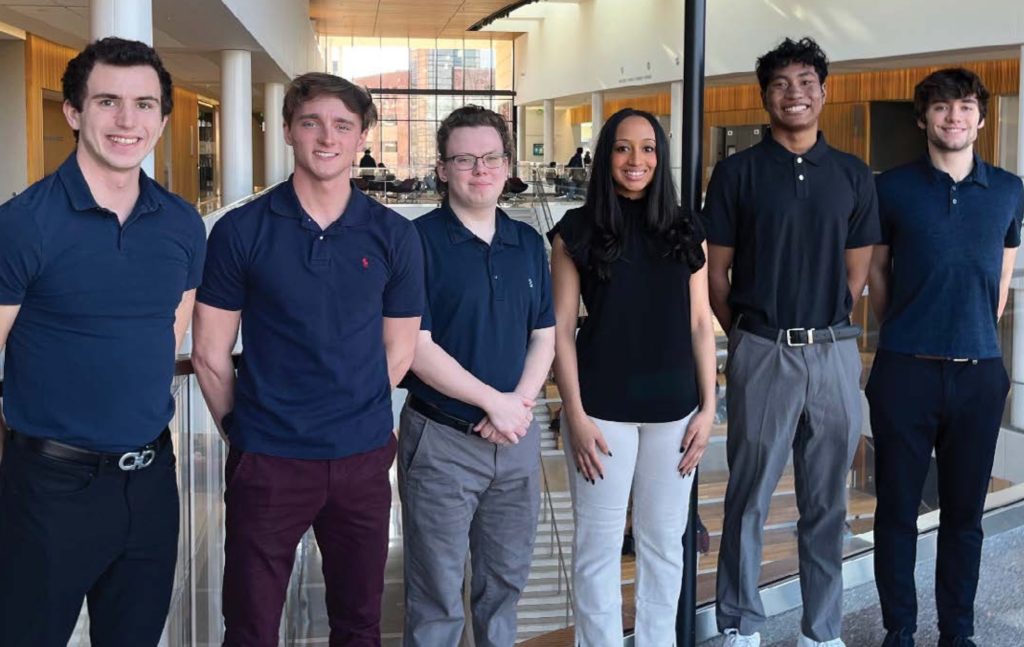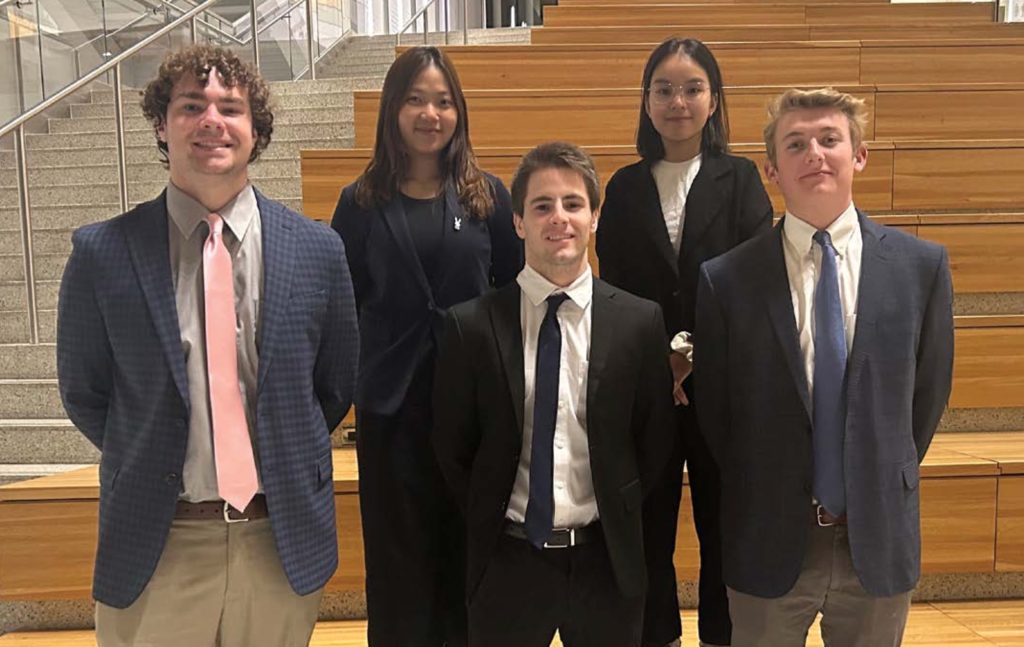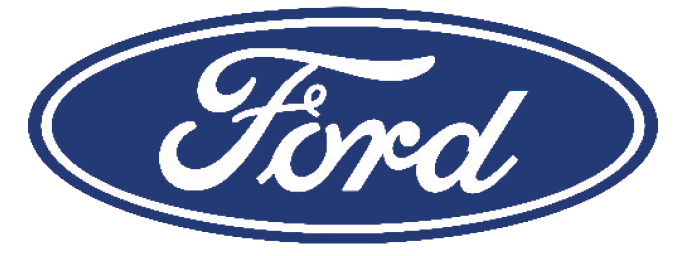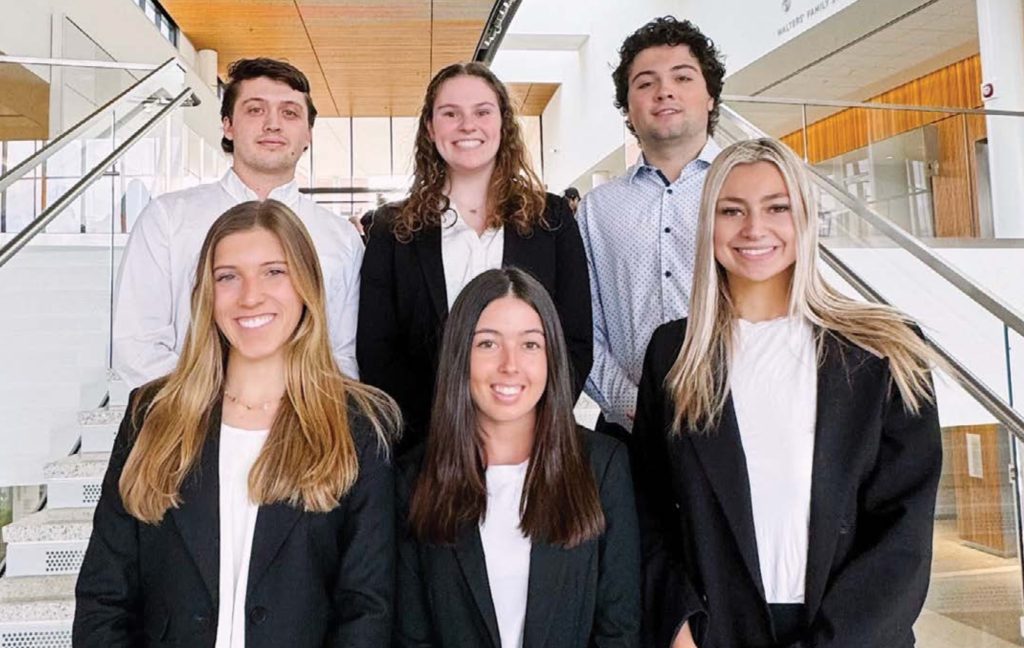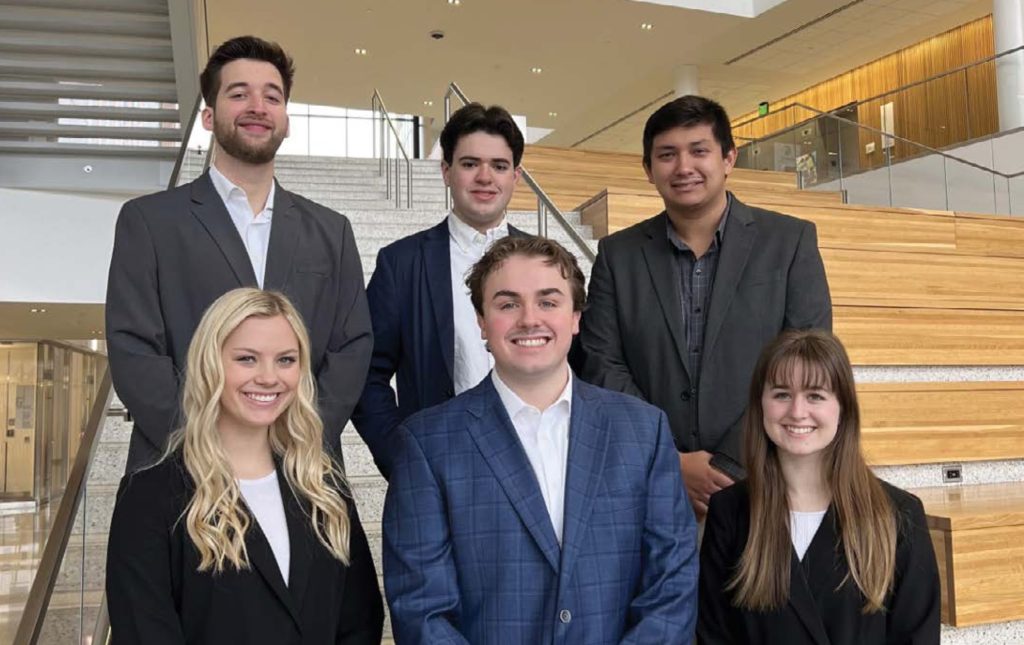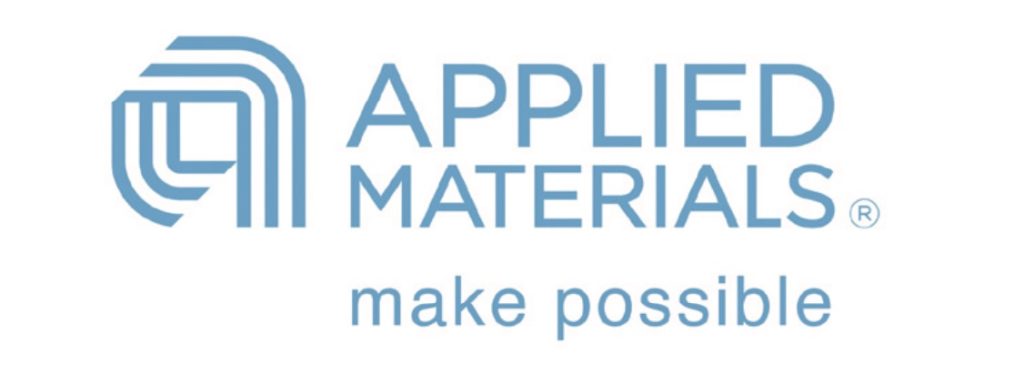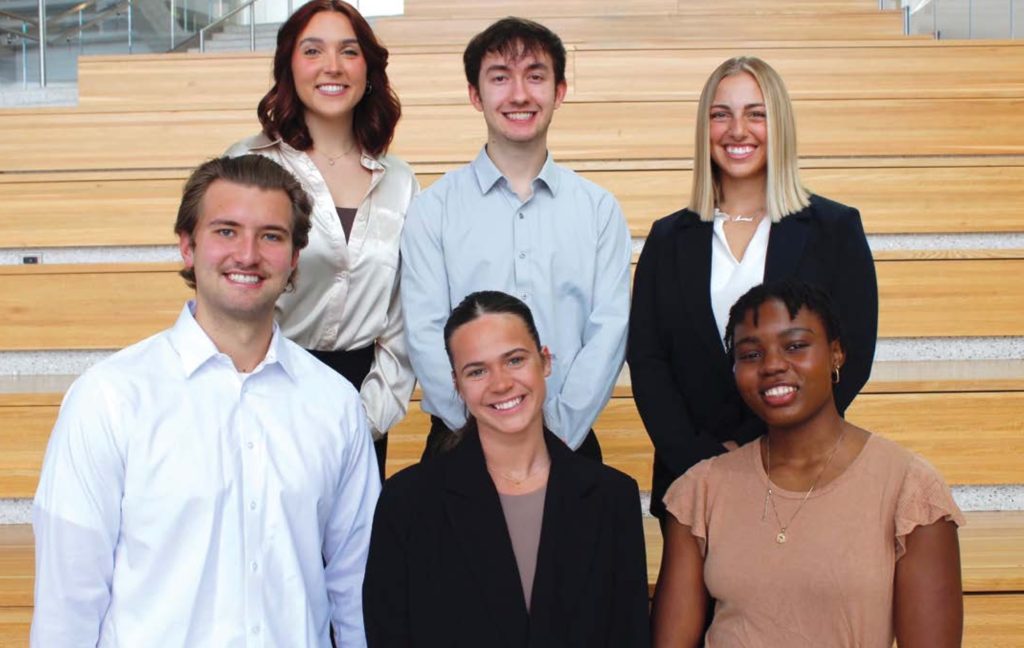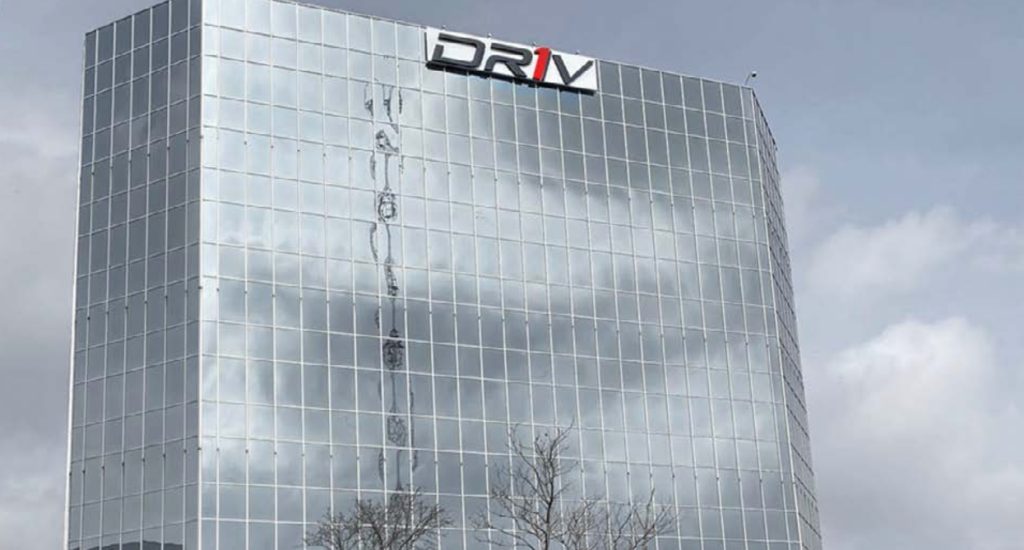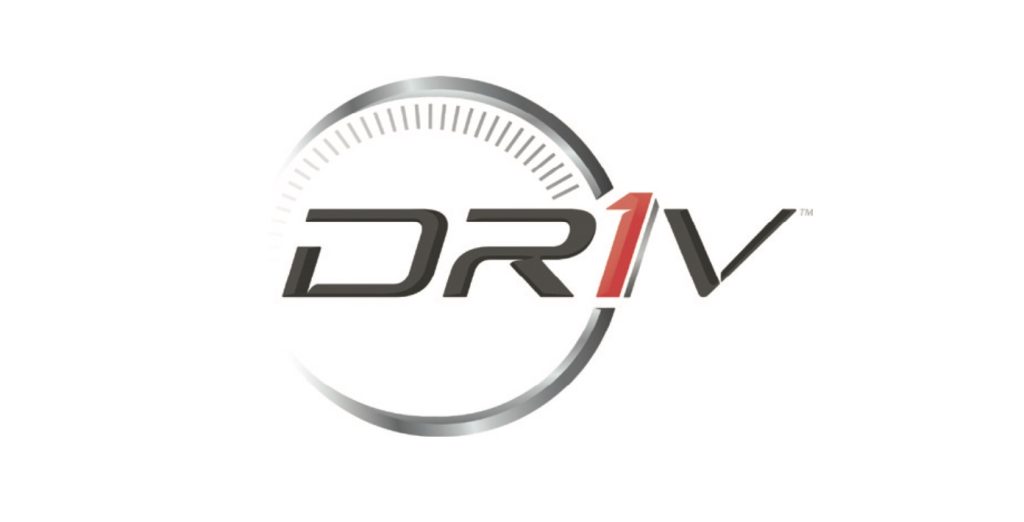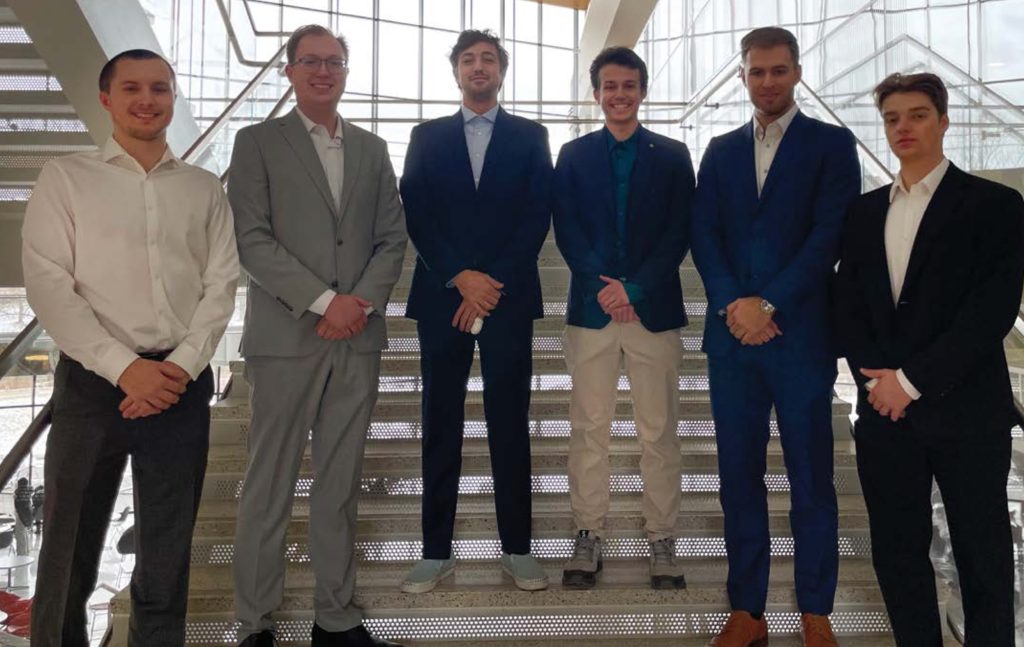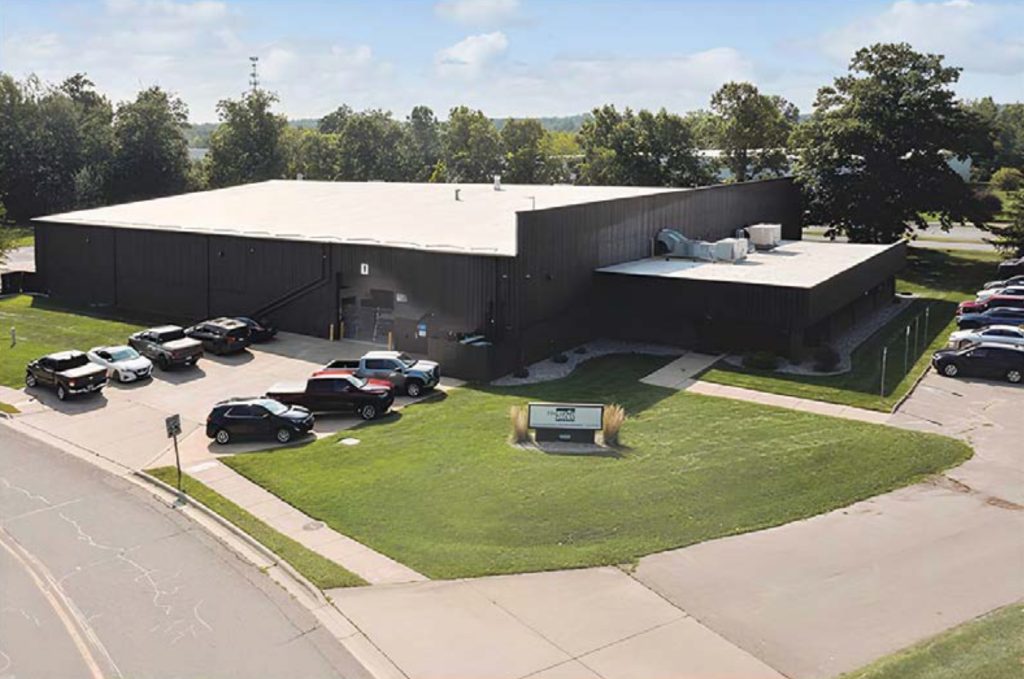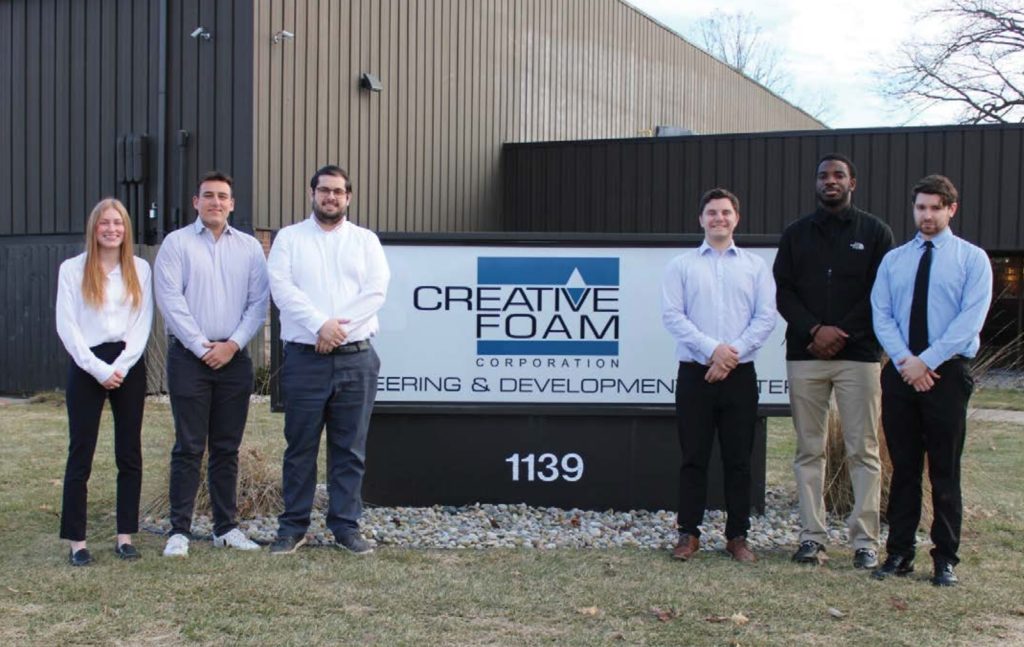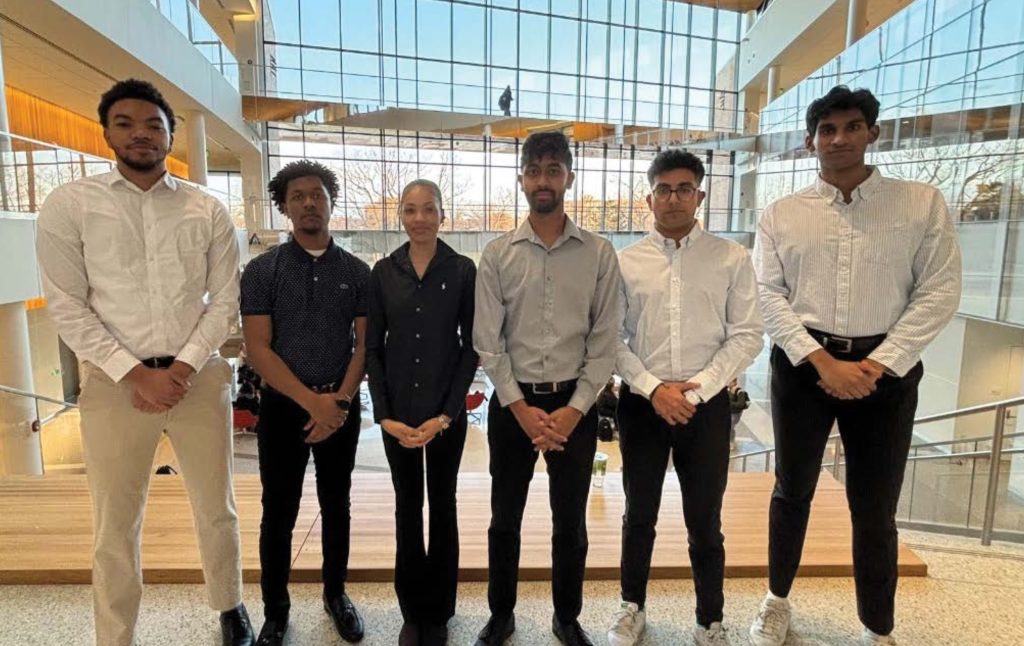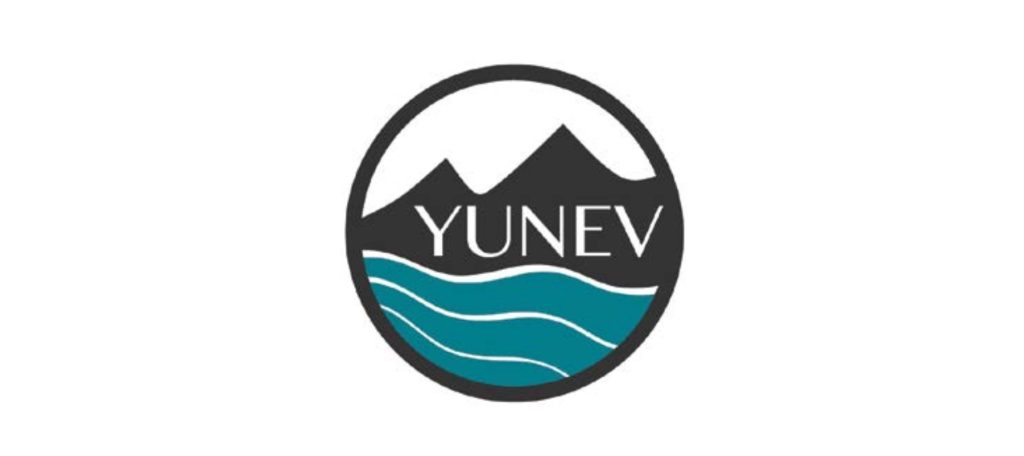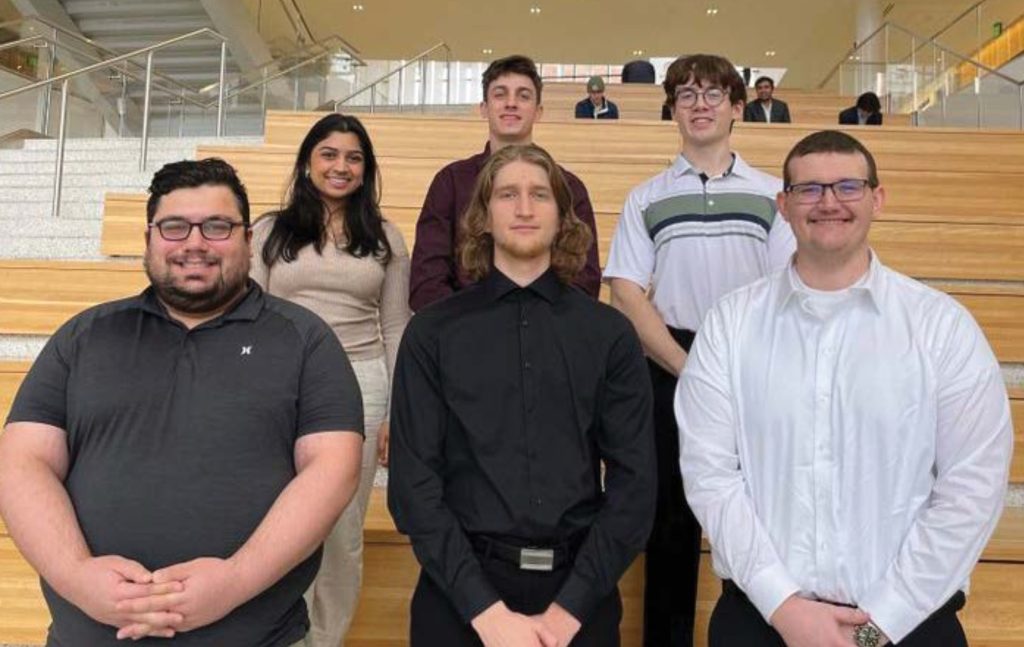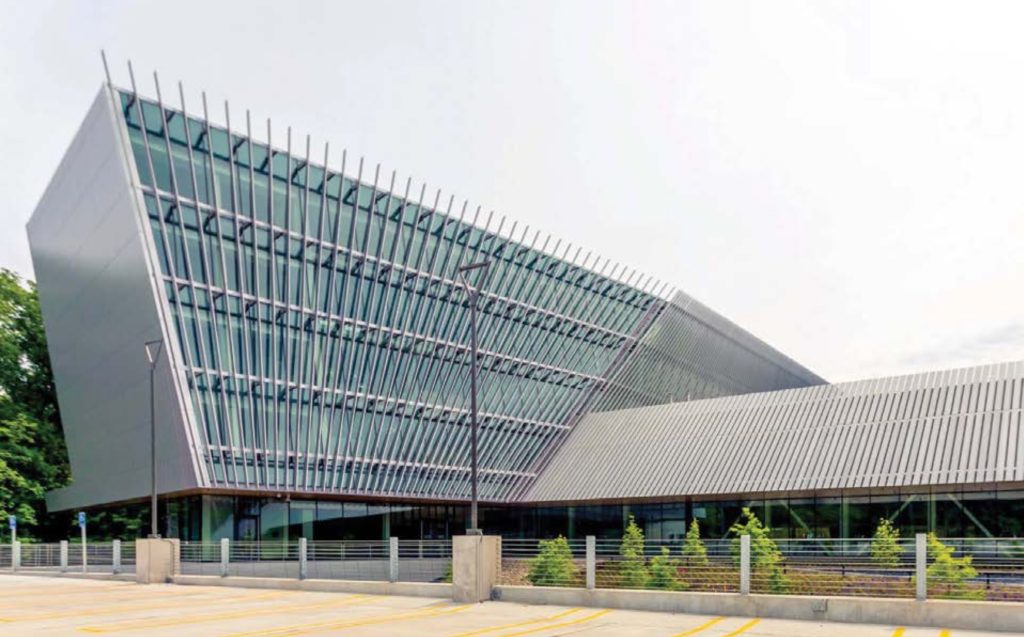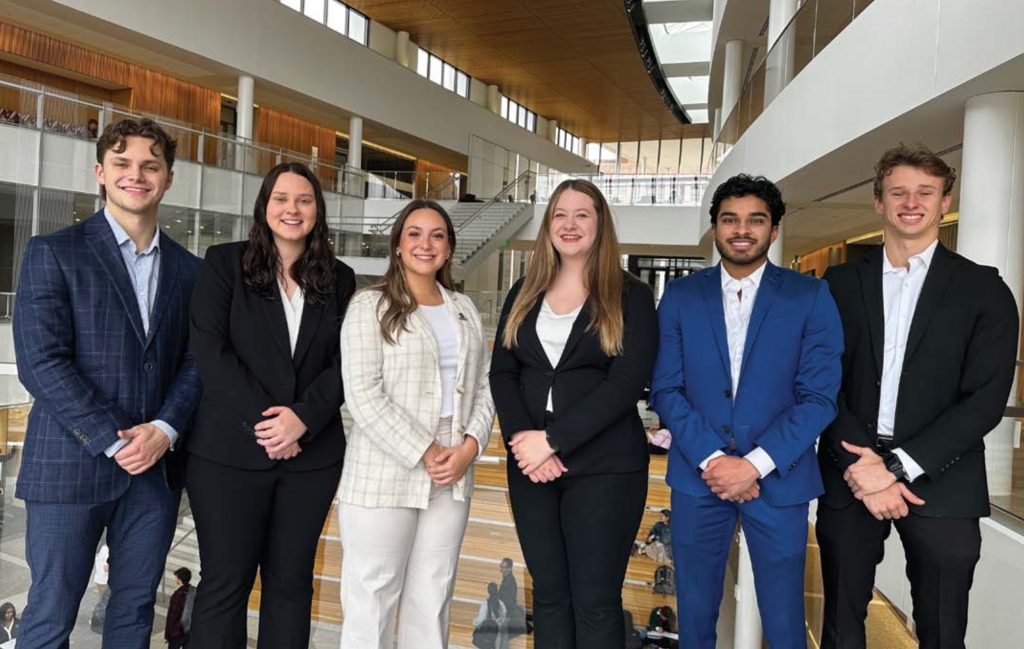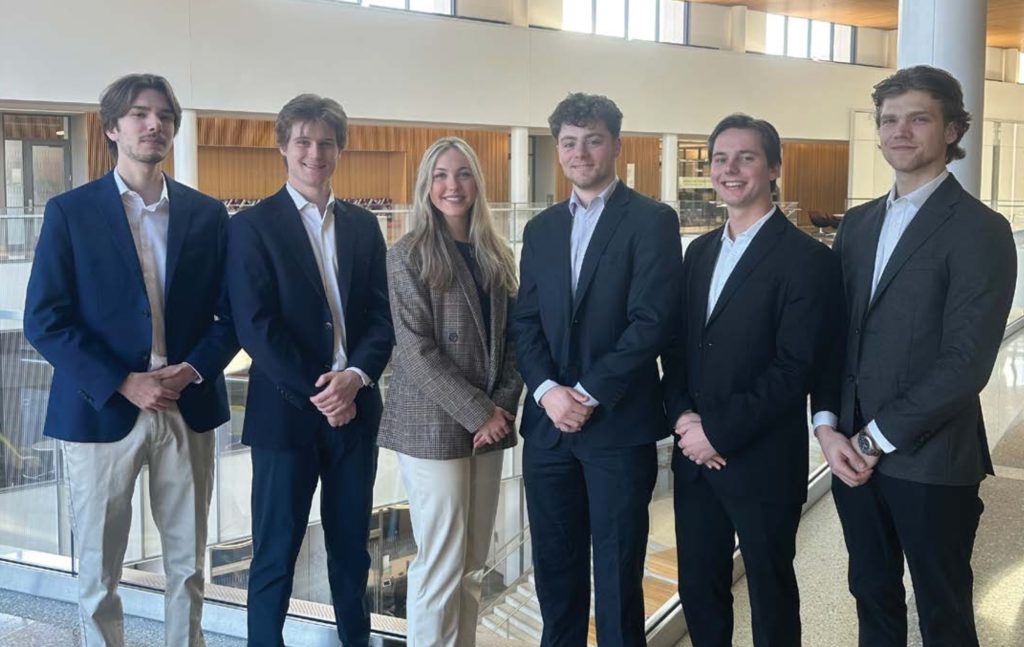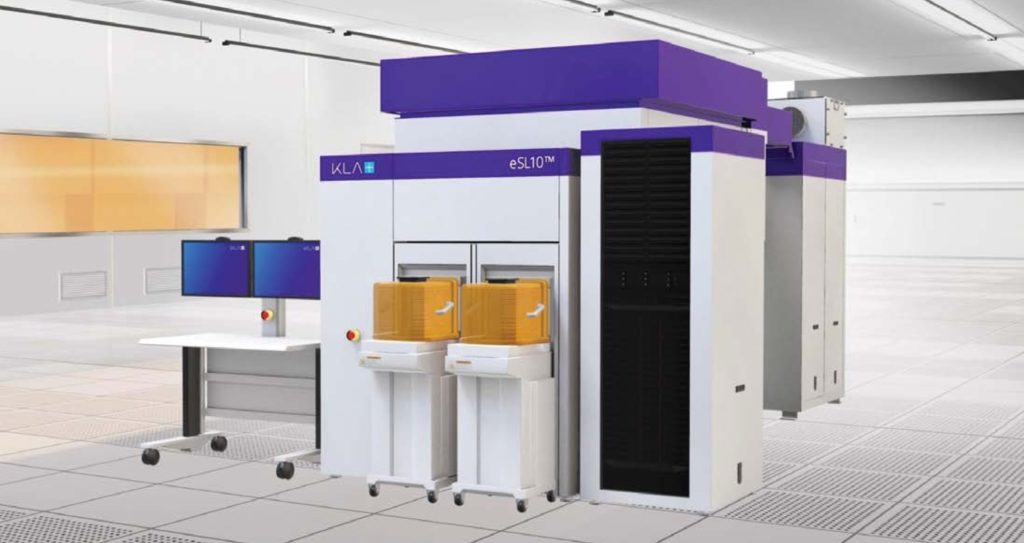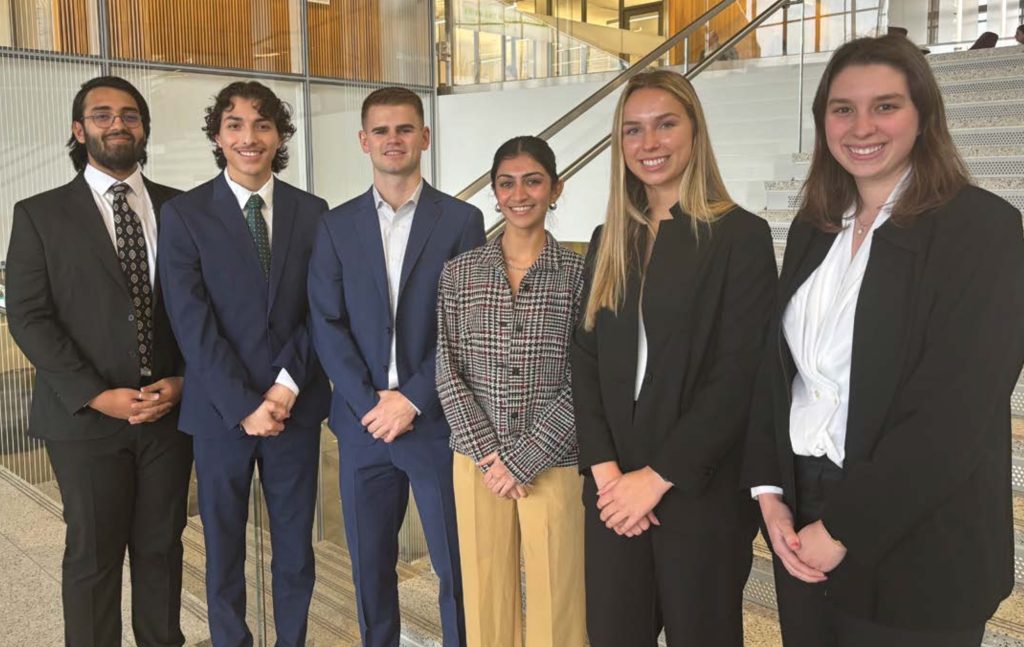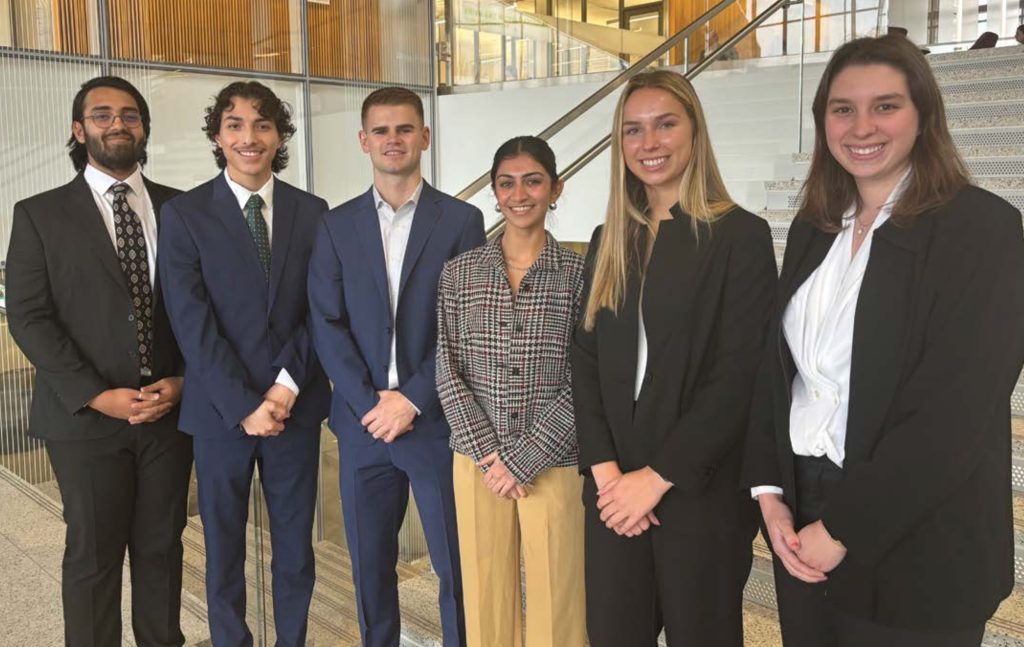Perrigo: Machine Vision Test Unit
SLB: Evaluation of Procurement Taxonomy to UNSPSC
SLB: Mastering Material Group Mapping
NASA Psyche Mission – ASU: Post-Launch Public Engagement
NASA Psyche Mission – ASU: Social Media Analysis
NASA Psyche Mission – ASU: Traveling Space Art Exhibit Implementation Planning
NASA Psyche Mission – ASU: Web Game Portal Analysis
Munters FoodTech: Product Packing Design Optimization
Kautex Textron: Identifying a Circular Economy for Plastic Composites
Alpine Supply Chain Solutions: Storage Type Analysis and Goods-to-Person Evaluation
American Axle & Manufacturing: Warehouse Mapping, Evaluation and Consolidation
Ford Motor Company: Production Vehicle Compliance Fresh Eyes Review
John Deere: Raw Steel Total Landed Cost
Trane Technologies: Scrap Metal Circularity
Applied Materials: Leveraging Forecasting/AI in Supply Chain
DRiV: Artificial Intelligence and Machine Learning Solutions for Global Purchasing
Creative Foam Corporation: Capacity Planning31 Creative Foam Corporation: Value Stream Mapping
YUNEV: Battery Cell Strategic Sourcing Database for the E-Mobility Market
KLA: Machine Learning Sales Forecasting Model
KLA: Procurement Automation Sourcing Recommendation
KLA: Global Logistics Environment Modeling
Microsoft: Cloud IT Hardware Sustainability: Reusable Packaging Solutions
Perrigo: Machine Vision Test Unit
Perrigo is a global pharmaceutical company focused on creating quality and affordable self-care products. Most of these products such as ibuprofen, allergy relief, and cold medication can be purchased in stores. One of the key technologies leading to Perrigo’s success is the effective use of machine vision systems. Due to the positive impacts machine vision has on manufacturing, Perrigo requested our team to create a machine vision test unit that would allow for more efficient testing of new vision systems. Prior to the creation of the machine vision test unit, Perrigo manufacturing lines were required to be shut down before testing of new vision systems could occur. These shutdowns are due to the processes that are required to connect new vision systems to the manufacturing lines.
With a portable test unit, Perrigo engineers will be able to connect to the vision systems and have no need to connect to the programmable logic controllers (PLCs) on the manufacturing line, thereby reducing line shutdowns. The test unit will have the capability of connecting directly to the camera or vision system being tested. This unit enables more research leading to major improvements in implementing new vision systems without causing manufacturing line downtime during testing. We have designed and assembled the electrical panel and created a portable assembly that will enable simple transportation of the unit between manufacturing lines. After the design was successfully assembled, we ran tests on the unit to ensure that it is working properly. The test unit will now be used to support the implementation of new vision systems at Perrigo’s packaging plant located in Allegan, Michigan.
Michigan State University
Team Members (left to right)
Cameron Cowland
Dexter, Michigan
Chance Wilczynski
Pinconning, Michigan
Perrigo
Project Sponsor
Chad Bartels
Zeeland, Michigan
Camden Lechenet
Holland, Michigan
Michael Wright
Grand Rapids, Michigan
Teaching Assistant
Michigan State University College of Engineering Design Day Spring 2024
Mikayla Norton
SLB: Evaluation of Procurement Taxonomy to UNSPSC
SLB is one of the world’s leading providers of technology for drilling, production and processing to the oil and gas industry. SLB is known for its innovative solutions and services that help the energy industry maximize recovery and efficiency while minimizing environment impact. Efficient handling, analysis, and sharing of extensive and diverse datasets is critical for operational success and innovation at SLB.
SLB currently utilizes their own customized taxonomy for all their resources. While this has worked for most of SLB’s resources, SLB has been experiencing problems with their maintenance, repair, and operations (MRO) supplies. This is due to the plethora of MRO materials that exist, which often can be classified differently by company. SLB specifically cited lack of clear communication with their suppliers as a major issue with their current taxonomy alongside analyzing overall spend clarity.
SLB is interested in converting to United Nations Standard Products and Services Code (UNSPSC), which is a universally utilized taxonomy system that uses an 8-digit numeric code to identify all products and services involved with a business and can be used to mitigate the communication issue at SLB. The project will entail looking into how various MRO resources are categorized in this system and helping SLB define the motivation they have for utilizing UNSPSC, also highlighting the pros and cons this system provides.
This project will affect several business functions, including procurement, supplier relations, and purchasing, saving each group valuable time when communicating and analyzing spend for the various MRO categories. This will require comparing the findings from the UNSPSC system to the current approach SLB is utilizing to recommend whether keeping their current system, switching completely to UNSPSC, or adopting a hybrid taxonomy will be most beneficial to providing clarity to the firm.
SLB Mastering Material Group Mapping
SLB is a multinational energy technology corporation that is not only the largest offshore drilling company in the world, but also the largest offshore drilling contractor by revenue. With a goal of creating technology that can unlock energy benefits for everyone around the globe, SLB emphasizes the importance of innovation to assist in their efforts of achieving this organizational-wide mission statement. From oil drilling and production to developing and scaling new energy systems, SLB’s vast array of intricate operations highlights the importance of streamlined supply chain processes.
This project revolves around the mastery of material group mapping (simply defined as the categorization of organizational materials based around a standardized set of criteria). Optimizing material group mapping processes will enable increasingly streamlined procurement, more effective inventory management, and overall, more accurate resource planning.
This project’s main goal is to take a more in-depth look at SLB’s current standardized material group mapping processes to discover a more efficient use for their current systems (which currently revolve around the SAP software). With the main sources of our findings centering around academic literature and organizational case studies, this project will not necessarily rely on metric-based quantification of how efficient processes can impact SLB’s systems, but will provide an overall proposal for SLB to improve on incorporating group material mapping into their company’s present work structure.
SLB is looking for this project to have a meaningful, research based, supportive conclusion, backed with data analysis from outside sources. Through our analysis of the current material group mapping systems, efficiency in procurement, inventory management, and resource planning will increase.
Michigan State University
Team Members (left to right)
James Fotis
Grand Rapids, Michigan
Jack Van Der Vliet
Carol Stream, Illinois
Griffin McEvoy
Mattawan, Michigan
Timothy Ling
Plymouth, Michigan
Sean Mullen
Plymouth, Michigan
Max Buckley
Columbus, Ohio
SLB
Project Sponsor
Alessandra Castilla Ruy Blum
Sugar Land, Texas
Teaching Assistant
Yashasvi Chauhan
NASA Psyche Mission – ASU: Post-Launch Public Engagement
The NASA Psyche Mission is a space exploration endeavor led by Arizona State University aimed at studying the metallic asteroid Psyche. On October 13, 2023, the Psyche spacecraft successfully launched and began its voyage to a unique metal-rich asteroid, orbiting the Sun between Mars and Jupiter. The mission’s primary objective is to gain insights into the history of our solar system and the formation of terrestrial planets. Unlike typical rocky or icy asteroids, Psyche is composed primarily of metallic elements, similar to Earth’s core. Scientists hope that studying Psyche will provide valuable information about the early solar system and the processes that led to the formation of planets.
The objective of this project is to refine and maximize the efficiency of a 2021 capstone team project. This end-product consisted of a cause-and-effect matrix to help the Psyche Student Collaborations team quantify decision-making about high-impact public engagement efforts in the lead-up to launch.
With the now-successful launch, the Psyche Mission has requested our team to revisit, revise, update, and extend the cause-and-effect matrix to make it relevant for this next phase of the mission: the 5.5-year cruise to the Psyche asteroid. This refined version will take into consideration what activities and opportunities would be appropriate to pursue now that the spacecraft is on its voyage. Additionally, our team will be revisiting the cause-and-effect matrix rating scheme, as well as identifying modern blueprints for increased digital, educational, communal, and limited-edition strategies. We will deliver a final report of our findings with updated criteria definitions, SWOT analyses, and rating systems, among others.
NASA Psyche Mission – ASU: Social Media Analysis
The NASA Pysche Mission is an exploratory initiative led by NASA and Arizona State University. The mission launched in October 2023 on its journey to the Psyche Asteroid in an attempt to learn more about the unique metal-rich asteroid. The asteroid’s metallic makeup is likely to provide information about the history of planet development and formation, including potential insight into how the Earth’s core was created.
Arizona State University has created a social media presence surrounding the mission to spread awareness and increase public interest in the mission. Due to mission completion scheduled for 2029, it is important that engagement across all social media platforms is fostered and continued for years to come.
Data will be gathered from the mission’s social media platforms (Instagram, Facebook, X, YouTube) and analyzed to provide insight into what factors increase engagement in order to predict and provide suggestions for the future. Analyzing the impact of the Psyche Mission’s social media presence before the launch versus current will be a highlight in analysis.
The goals of the social media analysis include: ensuring long- term engagement by understanding the current audience and finding areas to expand audience; creation of a data visualization tool to compare and contrast pre- vs post-launch metrics; and formulation of suggestions relating to content that will increase engagement.
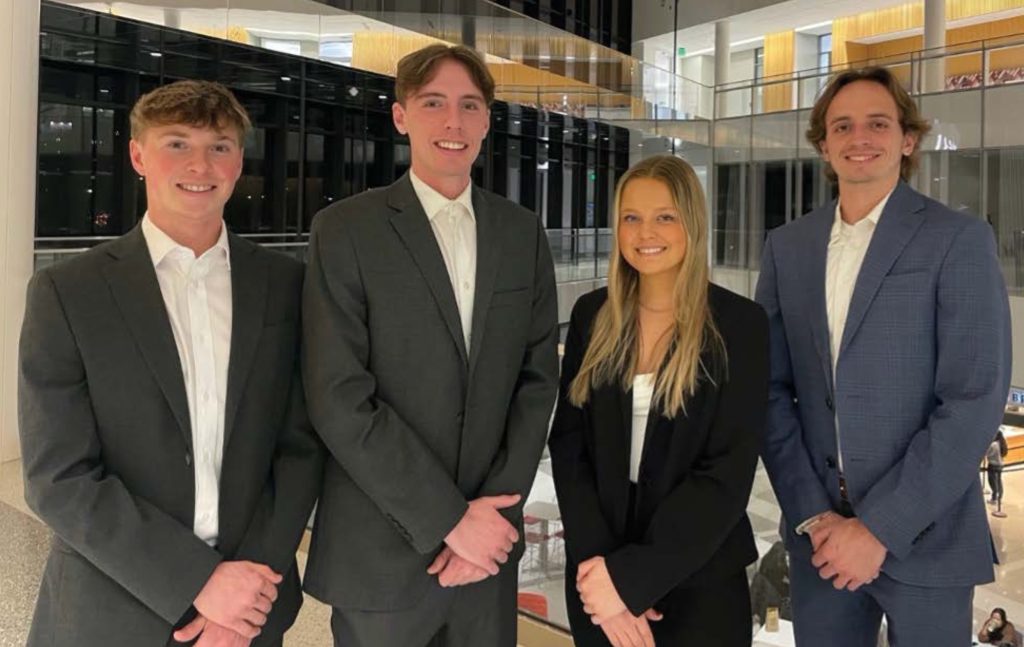
Michigan State University
Team Members (left to right)
Luke Elden
Lansing, Michigan
Andrew Nolan
Lake Orion, Michigan
Hannah Walters
Grand Rapids, Michigan
Tyler Pritchett
Midland, Michigan
NASA Psyche Mission – ASU
Project Sponsor
Cassie Bowman
Tempe, Arizona
Teaching Assistant
Grant Freeman
NASA Psyche Mission – ASU: Traveling Space Art Exhibit Implementation Planning
NASA is the United States government agency responsible for the nation’s civilian space program and for aeronautics and aerospace research. Its mission encompasses exploration of space, understanding Earth’s systems, advancing technology, and inspiring the next generation of scientists and engineers.
NASA’s Psyche Mission aims to explore a unique metal asteroid named Psyche, located between Mars and Jupiter. By studying this asteroid, scientists hope to gain insights into the early solar system and the formation of terrestrial planets.
Our team’s project aims to enhance the accessibility and reach of artwork inspired by the NASA Psyche Mission. Spearheaded by a collaborative effort between our team, a team from Arizona State University, and NASA Psyche, the initiative revolves around the creation of pre-curated exhibit kits. These kits feature a diverse array of artwork inspired by the mission, ranging from jewelry and sculpture to digital art. The project also entails the development of a sophisticated matching system to pair interested venues with curated kits best suited to their environment, location, and capabilities. By fostering partnerships with various institutions across the U.S., our project is working to facilitate the loaning of these kits, thereby expanding the mission’s exposure, and fostering collaboration among artists, educators, and space enthusiasts.
Emphasizing community engagement and educational outreach, the curated exhibits and associated events aim to inspire interest in space exploration, scientific discovery, and artistic expression while forging valuable networks within the broader community. Through meticulous planning and logistical coordination, our project seeks to maximize the impact of the artwork and promote a deeper understanding of the Psyche Mission’s goals and achievements.
Michigan State University
Team Members (left to right)
Clabe Hunt
Detroit, Michigan
Emily Farkas
Northville, Michigan
Ethan Jewell
Rochester Hills, Michigan
Adhi Sureshkumar
Troy, Michigan
NASA Psyche Mission – ASU
Project Sponsor
Cassie Bowman
Tempe, Arizona
Teaching Assistant
Chaitanya Shankaragallu
NASA Psyche Mission – ASU: Web Game Portal Analysis
NASA’s Psyche Mission launched on October 13, 2023, and is an Arizona State University (ASU)-led initiative. The mission seeks to learn more about the solar system in its earlier stages, especially the core, as it is similar to Earth’s core. By studying Psyche’s unique metallic makeup, NASA hopes to learn more about how Earth became what it is today.
Our team was tasked with analyzing the portal for web- based game – Mission: Psyche. The web game portal was soft- launched in the summer of 2023, showcasing web-based games developed by Psyche capstone teams nationwide. The portal itself was designed by capstone students from ASU, with over two dozen games to date representing the contributions from the capstone teams.
The goal of this project is to analyze the current state of the web portal and formulate recommendations about the site’s functionality, as well as user interface, naming conventions, metadata, game layouts, and feasibility of mobile/VR games. This project aims to help NASA reach new audiences through online games and to further spread the purpose and future of NASA. Our team applied recommendations through A/B testing. By having different website designs tested simultaneously while collecting feedback in the form of reviews, we used the data being tested to determine which site design best suits the demand of current users.
Munters FoodTech: Product Packing Design Optimization
Munters is a distinguished global leader in climate solutions, offering processes for industries where precise control over indoor humidity, temperature, and energy efficiency is paramount. With a commitment to environmental sustainability, Munters provides customers with climate control systems designed to optimize energy and water usage, thereby minimizing climate and environmental impacts.
Munters operates within three primary business sectors: AirTech, FoodTech, and Data Center. Within the realm of FoodTech, Munters is renowned as a world-leading supplier of innovative and energy- efficient climate systems tailored for livestock farming and greenhouse cultivation. Additionally, Munters FoodTech offers software solutions crafted to oversee and optimize the entire food production value chain, ensuring efficiency and sustainability at every step.
Currently, the Lansing branch of Munters FoodTech faces challenges with the packaging of their Atlas Fan. Their current method involves the use of expensive materials and complex assembly. This not only increases labor hours and production costs, but also diminishes warehouse capacity, and limits potential revenue streams. Furthermore, the packaging consists entirely of lumber, which contradicts Munters’ sustainability objectives.
Our team has developed a packaging solution that decreases labor hours, increases the use of sustainable materials, and increases packaging cost savings, as Munters self-finances the packaging for their fans.
Implementing this solution has the potential to reduce Munters’ packaging carbon footprint. Moreover, given the similarity in shape between the Atlas Fan and other fan designs, there is an opportunity to develop a scalable packaging design. This approach would decrease labor hours not only for one fan, but for all models.
Michigan State University
Team Members (left to right)
Jade Candela
Northville, Michigan
Michael Harper
New Baltimore, Michigan
Hana Duncan
Rochester, New York
Kyle Lee
Clarkston, Michigan
Kaylin Nguyen
Lansing, Michigan
Isaac Richardson
New Lothrop, Michigan
Munters FoodTech
Project Sponsor
Stephen Blocki
Lansing, Michigan
Mark Eggleston
Lansing, Michigan
Keith Goebel
Lansing, Michigan
Teaching Assistant
Grant Freeman
Kautex Textron: Identifying a Circular Economy for Plastic Composites
Founded in 1935, Kautex Textron is known worldwide as being a pioneer in polymer processing. Today, they are one of the top automotive suppliers to Original Equipment Manufacturers (OEMs) across the globe, manufacturing battery systems, plastic fuel systems, as well as industrial packaging.
This project is centered around identifying a circular economy for plastic composites with the goal of Kautex Textron’s research being to repurpose scrap or end-of-life composite material to eliminate landfill waste. With the increasing demand for a circular economy that strives to heighten the plastic recycling ratios, Kautex Textron has aimed to create a positive cash flow from the repurposed material, while staying on track to reach their goal of becoming net zero by 2050.
Michigan State University
Team Members (left to right)
Jack Deak
Northville, Michigan
Natalia Pittendrigh
Okemos, Michigan
Yashi Kumar
Novi, Michigan
Shreya Peddi
Canton, Michigan
Kaitlin Ifkovits
Grosse Pointe, Michigan
Charles Eppink
Clarkston, Michigan
Kautex Textron
Project Sponsor
Summer Javed
Troy, Michigan
Teaching Assistant
Grant Freeman
Alpine Supply Chain Solutions: Storage Type Analysis and Goods-to-Person Evaluation
Alpine Supply Chain Solutions, a consulting firm focusing on operational improvement, has asked our team to perform a storage type analysis and conduct a high-level Return On Investment (ROI) analysis for the respective client, Abt Electronics. Abt is a one-stop-shop for appliances, furniture, and electronics. Abt is consulting with Alpine, and our team, to better utilize a picking and packing warehouse. Expecting renovations, Abt wants to know the best options to increase ROI, among other selected performance measures.
Our team will be uncovering multiple statistics in over a year’s worth of data provided by Abt. This includes the data cleansing of nearly ten-thousand individual SKU entries to find both the busiest times of year and ideal measurements of rows (among other factors). With this new information, the OptiSlot program will be used in accordance with the newfound data to run possible iterations for Abt. This will help find Abt’s ideal size and quantity of the pick and reserve storages within the warehouse. Finally, Abt is interested in automation, so multiple means of automated alternatives will be evaluated.
In doing this, Abt will be presented with several data-backed methods of how to better utilize an 80,000 sq. ft. section of a picking and packing warehouse. Abt will be shown the optimal layout for rearranging the warehouse space and will be presented with accompanying ROI changes. This will also include time estimates of just how long it will take to get an order through the new and better-utilized picking and packing warehouse. Finally, methods of automation will be analyzed, and these will be presented similarly.
The end result will be a presentation with recommendations for Abt’s next moves. Based on the ROI and operation speeds of choice, Abt will soundly be able to choose their method of renovation.
Michigan State University
Team Members (left to right)
Nick Madias
Northville, Michigan
Reed Powers
Pinckney, Michigan
Luke McInnes
Utica, Michigan
Jadyn Henry
Northville, Michigan
Jaden Edwards
Grand Rapids, Michigan
Bryce Pain
Canton, Michigan
Alpine Supply Chain Solutions
Project Sponsor
Michael Wohlwend
Naples, Florida
Teaching Assistant
Chaitanya Shankaragallu
American Axle & Manufacturing: Warehouse Mapping, Evaluation and Consolidation
American Axle & Manufacturing (AAM) is a fast- growing Tier-1 automotive supplier that has 80 warehouses operating globally, with 29 located in North America. AAM serves a broad customer base, specializing in multiple products and technologies through the Driveline and Metal Forming divisions.
In recent years, AAM has acquired other corporations/warehouses to strengthen the company. These warehouses include many products and services such as Gear Development, Benchmarking, Prototype Build, and much more. The warehouses and operations vary from the different acquired companies, so it is difficult to see how each warehouse is utilized. The expansion of AAM created a mass amount of information in multiple Enterprise Resource Planning systems that is difficult to manage. With information being scattered, AAM does not know where resources are being allocated on a corporate scale.
The focused goal of this warehouse consolidation project is to cut global warehouse expenses for the sponsor by potentially consolidating warehouses and optimizing operational costs in all North America. The team is also looking to improve the transparency of warehouses by analyzing the intended function of each warehouse and assessing possible capacity and services. Through those goals, the team is hoping to improve sustainability and reduce transportation costs by evaluating warehouse locations and current transportation routes, potentially reducing necessary transportation between the warehouses and other facilities.
Michigan State University
Team Members (left to right)
Jack McDonald
Commerce, Michigan
Ethan Gough
Bloomfield Hills, Michigan
DJ Rauh
Grosse Pointe, Michigan
Katie Nguyen
Ho Chi Minh, Vietnam
Khanh Tran
Ho Chi Minh, Vietnam
American Axle & Manufacturing
Project Sponsor
Raymond Hatfield
Detroit, Michigan
Steven Luepke
Detroit, Michigan
Olivia Morcos
Detroit, Michigan
Teaching Assistant
Alyse Hines
Ford Motor Company: Production Vehicle Compliance Fresh Eyes Review
Ford is in need of a modernization of its current process of conducting compliance audits on production vehicles. The current process is called the “Fresh Eyes Review” and it does not satisfy the needs of the company in terms of efficiency and organization. This model is a lengthy Excel spreadsheet that serves as a checklist for an employee to thoroughly go through. The user may spend multiple hours on just one vehicle, which is not efficient, and is why this transition will help that. Ford is seeking guidance to revamp the “Fresh Eyes Review” tool and ensure that it will stay in tune with their vision of services, experiences, and software.
Our team will be creating a Microsoft based app to provide a clear overview of what is expected in each audit. The current auditing system is in Excel and is difficult to use since it is very tedious and often confusing to Ford employees. The transition will be very important in enhancing what is already offered. This app will display pictures of the certain deliverables that are needed for each audit to better understand what is exactly being reviewed. There will also be images to show good and bad outcomes of each audit so that the user can clearly see what meets passing standards. Links will be attached to each audit to provide information for users of what and why this specific area is being audited. Organization and accessibility are priorities for Ford, and this app will store the results and data in an organized manner so that they are easy to access and read by any user at any given time. The goal of this app is to give a simple and clear process that will allow less of a disconnect between the audit and the user with an organized app.
The current system takes longer because of the uncertainties with part checks and if something passes or fails. By making a new and improved “Fresh Eyes Review” tool, vehicles will be able to be audited faster, allowing more vehicles to be audited within a certain amount of time.
Michigan State University
Team Members (left to right)
Zach Bradley
Brooklyn, Michigan
Jenn Lypka
Novi, Michigan
Catherine Buko
Saginaw, Michigan
JohnPaul LeFevre
Saginaw, Michigan
Jacquelyn Williams
Clarkston, Michigan
Matt Ampunan
Northville, Michigan
Ford Motor Company
Project Sponsor
Sara Buchel
Hartland, Michigan
Justin Khami
Sterling Heights, Michigan
Mike Landry
Farmington, Michigan
Teaching Assistant
Grant Freeman
John Deere: Raw Steel Total Landed Cost
John Deere stands at the forefront of the global agricultural machinery and heavy equipment industry, renowned for its production of diesel engines, heavy-duty drivetrains, and lawn care equipment. Operating in sectors where precision and reliability are paramount, the company relies heavily on steel, particularly rolled steel sheets, to craft its machinery and equipment.
For John Deere, strategic decisions regarding steel procurement hinge upon various critical factors, including the volatile nature of steel prices in the market, logistical considerations such as shipping distances, the steel adder price, and the sustainability practices of potential suppliers, particularly concerning their greenhouse gas emissions.
The objective of this project is to develop a sophisticated tool tailored to optimize John Deere’s annual steel procurement strategy on a per-mill basis. By leveraging data-driven insights and advanced analytics, this tool aims to enhance profit margins and operational efficiency. Ultimately, it is poised to generate substantial cost savings, thereby bolstering bottom-line revenue returns for the company.
Michigan State University
Team Members (left to right)
Tanner Olbrich
Rochester, NY
Abby Guest
Rochester Hills, Michigan
Dominic Meloche
Northville, Michigan
Maggie Beckeman
Rochester, Michigan
Taylor Zrepskey
West Bloomfield, Michigan
Lucy Gjermstad
Barrington, Illinois
John Deere
Project Sponsor
Jenny Hamm
Moline, Illinois
Elliott Shriver
Moline, Illinois
Teaching Assistant
Chaitanya Shankaragallu
Trane Technologies: Scrap Metal Circularity
Trane Technologies is a global leader in manufacturing HVAC and refrigeration systems, with their headquarters based in Davidson, North Carolina. Trane is focused on efficient and sustainable climate solutions for buildings, homes, and transportation, and has set sustainability goals that are centralized on reducing emissions in their products and operations. As part of these 2030 objectives, they have an increased focus on circularity, specifically their scrap metal, and believe that there is an opportunity to apply circularity principles/closed-loop recycling to these materials.
Currently, Trane Technologies buys parts made of steel, aluminum, and copper, and those parts generate over 50 million pounds of scrap metal per year in North America. That scrap metal is then sold to scrap metal vendors. But after the scrap metal is sold to these vendors, Trane does not know what happens to the recycled material after it has been processed in the scrap metal mills.
Our project is focused on determining where these recycled materials end up after processing, how Trane can improve their current scrap metal processes, and the potential environmental benefits of returning the scrap metal to their original manufacturers to be incorporated into the products that they purchase. Trane aims to leverage the insights gained from this project, centered on their Southeast region, across all manufacturing plants to identify cost- saving opportunities.
Michigan State University
Team Members (left to right)
Justin Flaherty
Grosse Pointe, Michigan
Lucas Stotler
Brighton, Michigan
Ethan Cole
Canton, Michigan
Katie Scharrer
Caro, Michigan
Trevor Lovelace
Barrington, Illinois
Stephanie Smith
Clarkston, Michigan
Trane Technologies
Project Sponsor
Adam English
Davidson, North Carolina
Tom France
Davidson, North Carolina
Cal Krause
Davidson, North Carolina
Teaching Assistant
Grant Freeman
Applied Materials: Leveraging Forecasting/AI in Supply Chain
Applied Materials is a global leader in materials engineering solutions founded in 1967. Based in Santa Clara, California, the company provides equipment, services, and software to enable the manufacturing of advanced semiconductor chips, flat panel displays, and solar photovoltaic products. The company is committed to creating innovative technologies to help with the creation of advanced processes and manufacturing systems, along with advancing customers’ technology roadmaps while maintaining sustainability.
Prior to the project launch, Applied Materials had limited forecasting capabilities regarding Non-Standard Orders (NSOs), which are irregular purchase orders that arrive with little notice. The complexity of the orders varied significantly as the requests can be anything from a singular part to a full assembly. Because NSOs are ordered without much advance notice and are customizable, Applied Materials was looking for a better way to forecast these order types, so that the company could better prepare and allocate materials to its customers.
To achieve success in this project, our team worked to analyze different forecasting methods to formulate a solution that led to increased visibility and planning to coordinate the production of consumer products in a timely and efficient manner regarding NSOs. Through enhanced NSO tracking and forecasting, the project created opportunities for increased visibility and preparation for NSOs, promoting more seamless operations and lowered supply chain uncertainty. By creating a forecasting model specifically for projecting future NSOs, the project improved Applied Materials’ ability to adapt to the shifting global landscape by increasing efficiency in supply chain management and the adaptability of the global supply chain network.
Michigan State University
Team Members (left to right)
Gabi Kuchka
Plymouth, Michigan
Nathan Gersabeck
Commerce, Michigan
Sebastian Sobotka
Warren, Michigan
Kenzie Michalak
Macomb, Michigan
Marina Nelson
Commerce, Michigan
Beverly Nkwami
East Lansing, Michigan
Applied Materials
Project Sponsor
Nicholas Yunkun
Austin, Texas
Teaching Assistant
Mikayla Norton
DRiV: Artificial Intelligence and Machine Learning Solutions for Global Purchasing
Tenneco incorporates more than 30 of the automotive industry’s widely known brands. Its four business groups include Performance Solutions, DRiV, Clean Air and Powertrain. DRiV is responsible for Tenneco’s aftermarket product solutions group. Their goal is to help people get the most out of every vehicle.
The DRiV capstone project revolves around integrating artificial intelligence (AI) and machine learning tools to enhance human purchasing decisions within the company’s framework. DRiV, a forward-thinking enterprise, recognizes the potential of leveraging advanced technologies to streamline and optimize its purchasing processes. By implementing AI algorithms and machine learning models, DRiV will analyze vast amounts of data and redefine their decision-making process. The tools offer opportunities to identify cost-saving opportunities, predict future demand, mitigate supply chain risks, and improve overall efficiency in global purchasing operations. Through the integration of AI and machine learning, DRiV empowers its purchasing professionals with data-driven decision- making capabilities, ultimately driving competitive advantage and sustained growth in the dynamic marketplace, while reducing manual human efforts and enabling their team to devote more time to clients and customers. The team’s overarching goal for this project was to find an AI software that will maximize the efficiency of the purchasing process for car parts across the board.
Based on the needs and benchmarks, we ultimately picked the best option to help DRiV with their purchasing decisions. DRiV will use these software capabilities to power purchasing decisions for the after-market. Our team created a report on the top choice, highlighting all the productive features and why it is the best fit for DRiV.
Michigan State University
Team Members (left to right)
Zachary Ziemba
Livonia, Michigan
Mike Reed
Livonia, Michigan
Elliot Greene
Scarsdale, New York
Andrew Martin
Rochester, Michigan
Lucas Goings
Brighton, Michigan
Zach McKibbon
Farmington Hills, Michigan
DRiV
Project Sponsor
Jonathon Lakin
Royal Oak, Michigan
Teaching Assistant
Mikayla Norton
Creative Foam Corporation: Capacity Planning
Creative Foam has been around since 1969 as a manufacturer and supplier. They offer engineering, design, tooling, and shipping services, all being done in-house. Creative Foam is integrated into multiple markets, transportation, industrial, and healthcare. Some of the services supplied are compression molding, vacuum forming, die cutting, lamination, and other industry needs. One of Creative Foam’s key principles is being sustainable and reducing environmental impact by using environmentally friendly materials and practices. To better serve their customers Creative Foam would like to improve equipment utilization.
Capacity planning involves evaluating and optimizing the current utilization of equipment, material, and personnel to ensure efficiency. This process has drastically changed through the years, and it has adapted to new and emerging technologies. Due to the advancements of real-time data analyses, globalization, and supply chain management, capacity utilization has grown more important to manufacturing facilities worldwide.
This project will be focusing on capacity planning for two Creative Foam production plants. The scope of this project is to improve equipment utilization from open/available capacity by creating a tool/reporting dashboard for the leadership team related to equipment capacity, while maintaining Creative Foam’s reputation for responsiveness and creating multiple solutions. The tool/reporting dashboard will allow Creative Foam leadership to use and help make their equipment capacity more efficient. With successful implementation of the dashboard on both analyzed plants, Creative Foam will expand to all other facilities, ensuring a standardized and effective approach across the entire organization.
Michigan State University
Team Members (left to right)
Ellie Burwitz
Brighton, Michigan
Dylan Benyukhis
Buffalo Grove, Illinois
Joao Machado
Pouso Alegre, Brazil
Mitch Dillon
Plymouth, Michigan
Ced Johnson II
Detroit, Michigan
Joshua Queener
Warren, Michigan
Creative Foam Corporation
Project Sponsor
John Nestle
Fenton, Michigan
Camlin Vermilya
Fenton, Michigan
Mike Zayan
Fenton, Michigan
Teaching Assistant
Alyse Hines
Creative Foam Corporation: Value Stream Mapping
Creative Foam, a leading foam fabricator with 50+ years of experience based in Fenton, Michigan, specializes in custom foam solutions for automotive, medical, packaging, and consumer goods industries. Their expertise includes polyurethane, polyethylene, and expanded polystyrene (EPS) foam materials. With locations across the U.S. and Mexico, they offer advanced engineering and fabrication capabilities, such as CNC routing, waterjet cutting, die cutting, and custom foam molding.
Collaborating with our team, Creative Foam is undergoing a transformative project to optimize their Engineering and Design (E&D) facility’s value stream. The initiative involves assessing current processes, envisioning future states, and implementing efficiency measures for enhanced competitiveness. The project includes Kaizen event training sessions, focusing on lean methodologies and cost- efficient process development.
Our team conducts in-depth process analysis, identifies improvement opportunities, and collaborates with Creative Foam to develop a future state vision using data-driven decision-making and stakeholder feedback. A key component is the creation of a Value Stream Map (VSM) for the E&D Design and Production Tooling Facility, utilizing the Kaizen Event Process. This visual representation helps identify inefficiencies and optimize processes for tangible results.
Through ongoing monitoring and evaluation, the collaboration aims to empower Creative Foam to achieve operational excellence and transform its facility into a production powerhouse for long-term success in the foam and plastics industry.
Michigan State University
Team Members (left to right)
Matai Swain
Flint, Michigan
Semaj Willis
Detroit, Michigan
Kayla Clowney
Southfield, Michigan
Sache Krishnaraj
Canton, Michigan
Harshil Chaudhary
Novi, Michigan
Noel Vizzeswarapu
Novi, Michigan
Creative Foam Corporation
Project Sponsor
Andrew Beem
Fenton, Michigan
Bruce Bennett
Fenton, Michigan
Wes Distefano
Fenton, Michigan
Mario Gonzalez
Fenton, Michigan
Javier Madril
Fenton, Michigan
John Nestle
Fenton, Michigan
Teaching Assistant
Chaitanya Shankaragallu
YUNEV: Battery Cell Strategic Sourcing Database for the E-Mobility Market
Founded in 2014, YUNEV is a venture development firm focused on building better battery supply chains. Currently, lower volume Original Equipment Manufacturers (OEMs) find it difficult to source necessary batteries as larger volume companies are served first and a lack of visibility within the industry with regards to critical battery cell availability and information makes the whole process difficult. This project is to assist YUNEV in offering a solution to the industry-wide lack of visibility in relation to information and sourcing of battery cells for these lower volume OEMs with the hope of accelerating the electrification of the mobility industry. Furthermore, this database aims to become a source that a wide variety of professionals can use to source and compare batteries.
The first aspect that was investigated was the quality of information currently in the database by checking existing specs with the information found in their sources’ websites. After collecting the error rates, the team discussed possible solutions that would reduce error from future inputs. Furthermore, our team investigated possible ways to optimize and structure the database using the current program that the database resides in, along with other possible programs. After a multitude of options were discussed, the most optimal structure based on findings was recommended.
Another area under investigation was the design of a secure interface to enable the sharing of YUNEV’s proprietary data with external industry partners. This data interface needed to be able to electronically query and extract data in a secure, efficient, and error-free manner. The last of the objectives was in the sector of commercial data exchange with cell suppliers where we devised possible forms of communication with YUNEV’s partners. This aspect of the project hopes to maintain accuracy of the database and keep it up to date with consistent checks for years to come.
Michigan State University
Team Members (left to right)
Lamar Dimitry
Southfield, Michigan
Ipsa Patel
West Bloomfield, Michigan
Liam Mcgregor
Southfield, Michigan
Ethan Rylko
Rochester Hills, Michigan
Henry Ficyk
Livonia, Michigan
Jacob Cieslinski
Bay County, Michigan
YUNEV
Project Sponsor
Shruti Sahu
Austin, Texas
Teaching Assistant
Mikayla Norton
KLA: Machine Learning Sales Forecasting Model
KLA is a manufacturer and service provider for capital equipment for the semiconductor industry. The company specializes in the process control and yield management aspects of microchip manufacturing.
The semiconductor industry has become essential to many industries and geographies and is expected to grow and change in ways that are beneficial to KLA. Until 2016, the majority of growth for semiconductors was led by advances in PCs and mobile phones, and then in 2020 by the explosion of data and analytics. Semiconductor revenue is expected to double and to exceed one trillion dollars by 2030.
This growth and diversification serve as an opportunity for KLA, but also presents a challenge. Understanding the demand for process control and yield management equipment, which configurations will be needed, and how to enter the market at the right time, are some of the things that KLA needs to consider. Therefore, precise sales forecasting is a top priority for KLA.
To help KLA maintain success in the semiconductor industry and anticipate their future sales, our team was given the task of finding external factors to predict future demand by using publicly sourced information. The scope of the project is to understand the external factors and leverage them along with selective internal data to create a machine learning model capable of predicting sales.
Michigan State University
Team Members (left to right)
Landen Piper
Hudsonville, Michigan
Kourtney Klatt
Livonia, Michigan
Paulina Perkins
Dexter, Michigan
Sydney McConnel
Austin, Texas
Srujan Koneru
Troy, Michigan
Nathan Hogan
Troy, Michigan
KLA
Project Sponsor
Rafael Briceno
Ann Arbor, Michigan
Teaching Assistant
Mikayla Norton
KLA: Procurement Automation Sourcing Recommendation
KLA Corporation, headquartered in California, stands as a frontrunner in the field of integrated circuits, semiconductors, and nanoelectronics. Driven by a mission to propel human progress through technological innovation, KLA has amassed a workforce of over 14,000 individuals spread across 19 countries, united in their commitment to revolutionize solutions that positively impact lives globally.
Given the ever-evolving nature of KLA’s dynamic industry landscape, their indirect procurement team asked us to help optimize their procurement processes. Presently, a significant portion of the team’s resources is dedicated to managing tail spend, an area ready for efficiency improvements through automation. By automating these processes, we aim to liberate valuable time for employees to concentrate on strategic capital expenditures.
The ultimate objective of this project is to develop an evaluative matrix for potential software replacements. This matrix will be created by finding key factors and assessing them against the performance metrics that gauge user success. Our recommendation will pinpoint the software solution best suited for integration into KLA’s indirect procurement operations, aligning closely with their organizational goals and objectives.
Michigan State University
Team Members (left to right)
Aaron Langtry
Macomb, Michigan
Eli Reifenrath
Elmhurst, Illinois
Ella Green
Rochester, Michigan
Charlie Nelson
Bloomfield Hills, Michigan
Matthew McAlvey
Okemos, Michigan
Cal Dybicz
Elk Grove Village, Illinois
KLA
Project Sponsor
Karen Hiatt
Ann Arbor, Michigan
Teaching Assistant
Yashasvi Chauhan
KLA: Global Logistics Environment Modeling
KLA is a global technology leader that develops equipment and services that enable innovation throughout the electronics industry. KLA’s business spans across different industries, including automotive, chip manufacturing, artificial intelligence, and many more. Focusing on cost savings, KLA has established a need for a transportation management system (TMS) that will further help not only manage transportation of goods throughout the business but will also better analyze company spend on logistics on a regular basis.
In KLA’s logistics department, the goal for this TMS is to predict market behavior, consolidate processes for stakeholders to use across manufacturing, and enable access to all shipment details on a single platform. This system will also be able to eliminate the need for third-party reporting, better assisting KLA to meet their needs. Our team also strives to optimize costs for KLA through the implementation of this system by streamlining demand planning and improving accuracy.
To help KLA address this business need, our team has been tasked with finding a TMS application suitable to meet the business requirements. Through initial research, our team has been able to identify top TMS applications used in the market today, as well as their key capabilities. Further analysis on the current state of KLA logistics, through data provided by KLA as well as meetings with key stakeholders, will provide a greater understanding of KLA’s need for a TMS. This will enable an appropriate TMS to be selected and recommended by our team for implementation into KLA. After recommending the appropriate TMS, KLA will be able to facilitate all information on the single platform and create automated reports from the consolidated source.
Michigan State University
Team Members (left to right)
Rochisshil Varma
Kolkata, India
Edwin Villeda-Callejas
Battle Creek, Michigan
Joe Tarrant
Muskegon, Michigan
Arzoo Chhaya
Grosse Pointe Shores, Michigan
Ava Wisnewski
Rochester Hills, Michigan
Kara Kieras
Grand Rapids, Michigan
KLA
Project Sponsor
Eugene Kim
Ann Arbor, Michigan
Suli Wang
Ann Arbor, Michigan
Teaching Assistant
Alyse Hines
Microsoft: Cloud IT Hardware Sustainability: Reusable Packaging Solutions
Microsoft Corporation is a leading developer of computer software, operating systems, cloud computing, and artificial intelligence applications, dedicated to driving sustainability within its operations. Guided by the mission to empower every person and organization to achieve more, Microsoft has set forth ambitious sustainable packaging goals. These goals include packaging to have a minimum of 50% recycled content along with 100% of all packaging to be reusable, recyclable, or compostable. Additionally, Microsoft is aiming to eliminate single-use plastics within all cloud packaging in datacenters and reduce packaging weight by a minimum of 10% from the December 2020 baseline.
This project focuses on developing a sustainable packaging solution for the company’s cloud infrastructure hardware. It targets the reduction of single-use plastics in Microsoft’s supply chain, particularly focusing on replacing electrostatic discharge (ESD) bags used for hardware component packaging. Conducting thorough research will enable the exploration of alternative materials that better align with Microsoft’s sustainability objectives. The approach involves evaluating the sustainability, feasibility, protection, and cost-effectiveness of various materials to identify the most suitable alternative to ESD bags. The analysis will be supported by a metrics system resembling a supplier scorecard, ensuring a robust assessment of each option. The end goal is to provide a sustainable packaging solution that contributes to Microsoft’s broader sustainability goals and drives positive environmental impact.
Michigan State University
Team Members (left to right)
Shannon Brown
Hastings, Michigan
Amber Jakiel
Caledonia, Michigan
Hannah Billmeier
Saginaw, Michigan
Nikita Shetti
Rochester Hills, Michigan
Jenna Somers
Midland, Michigan
Microsoft
Project Sponsor
Julia Rios Brougher
Seattle, Washington
Jack Tinkham
Bellevue, Washington
Teaching Assistant
Yashasvi Chauhan

